#no. 1 fastening of the 18th century
Explore tagged Tumblr posts
Text
watching turn constantly like. why is your uniform coat unfastened. slut
#three words: hooks and eyes#no. 1 fastening of the 18th century#use 'em#please!! that would not have passed back then!!#turn amc#this is your captain speaking
14 notes
·
View notes
Text
Word List: Fashion History
to try to include in your poem/story (pt. 1/3)
Adinkra - a flat, cotton textile that is stamped with symbols which create the meaning of the garment; produced by the Asante peoples in Ghana
Agal - a rope made from animal hair which wraps around a keffiya (square cloth) on the head and is worn typically by Bedouin men
Akwete - a decorative cloth with complex weave designs, creating intricate geometric patterns, made with many vibrant colors; it is usually made into wrappers for women to wear and it is made by the Igbo women of Nigeria
Aniline Dyes - synthetic, chemical dyes for garments first invented in the 19th century
Anorak - a jacket that typically has a hood, but not always, which was originally worn by the indigenous peoples of the Arctic designed to keep them warm and protected from harsh weather
Back Apron (Negbe) - an oval-shaped decorative pad worn by Mangbetu women over the buttocks in Central Africa
Backstrap Loom - a lightweight, mobile loom made of wood and a strap that is wrapped around the back; it only needed to be attached to a tree or a post for stability and to provide tension
Banyan - a loose-fitted informal robe or gown typically worn by men in the late 17th to the early 19th centuries
Barbette - a piece of linen which passes under the chin and is pinned at the sides, usually worn in conjunction with additional head coverings during the Middle Ages
Bark Cloth - fabric made out of bark from trees
Beadnet Dress - a decorative sheath dress made of beads worn in ancient Egypt
Bloomers - a bifurcated garment that were worn under dresses in the 19th century; they soon became a symbol of women’s rights because early activist Amelia Bloomer wore drawers long enough to stick out from under her dress
Bogolanfini - (bogolan- meaning cloth; fini- meaning mud) a cotton cloth made from strips of woven fabric, which are decorated with symbolic patterns using the mud-resist technique, sewn together at the selvage to create a fabric that is utilized during the main four stages of a West African Bamana woman’s life: puberty, marriage, motherhood, and death
Bombast/Bombasted - the padding used to structure clothing and create fashionable silhouettes in the 16th and 17th centuries
Boubou - an African robe made of one large rectangle of fabric with an opening in the center for the neck; when worn it drapes down over the shoulders and billows at the sleeves
Buff Coat - a leather version of the doublet that was often, but not exclusively, worn by people in the military in the 17th century
Bum Roll - a roll of padding tied around the hip line to hold a woman’s skirt out from the body in the late 16th and early 17th centuries
Burqa - an outer garment worn by Muslim women that covers the entire body, often with a cutout or mesh at the eyes
Busk - a flat length stay piece that was inserted into the front of a corset to keep it stiff from the 16th century to the early 20th century
Bustle - a pad or frame worn under a skirt puffing it out behind
Cage Crinoline - a hooped cage worn under petticoats in the 19th century to stiffen and extend the skirt
Caraco - 18th century women’s jacket, fitted around the torso and flared out after the waist
Carrick Coat - an overcoat with three to five cape collars popular in the 19th century and mostly worn for riding and travel–sometimes called a Garrick or coachman’s coat
Chantilly Lace - a kind of bobbin lace popularized in 18th century France; it is identifiable by its fine ground, outlined pattern, and abundant detail, and was generally made from black silk thread
Chaperon - a turban-like headdress worn during the Middle Ages in Western Europe
Chemisette - a piece of fabric worn under bodices in the 19th century to fill in low necklines for modesty and decoration
Chiton - an ancient Greek garment created from a single piece of cloth wrapped around the body and held together by pins at the shoulders
Chlamys - a rectangular cloak fastened at the neck or shoulder that wraps around the body like a cape
Chopines - high platform shoes worn mostly in Venice in the 16th & 17th centuries
Clavus/Clavi - decorative vertical stripes that ran over the shoulder on the front and back of a Late Roman or Byzantine tunic
Clocks/Clocking - decorative and strengthening embroidery on stockings in Europe and America during the 16th-19th centuries
Cochineal Dyes - come from the Cochineal beetle that is native to the Americas and is most commonly found on prickly pear cacti; when dried and crushed, it creates its famous red pigment that is used to dye textiles
Codpiece - originally created as the join between the two hoses at the groin, the codpiece eventually became an ornate piece of male dress in the 16th century
Cuirass Bodice - a form-fitting, long-waisted, boned bodice worn in the 1870s and 1880s–almost gives the appearance of armor as the name suggests
Dagging - an extremely popular decorative edging technique created by cutting that reached its height during the Middle Ages and Renaissance
Dalmatic Tunic - a t-shaped tunic with very wide sleeves; worn by both men and women during the Byzantine empire
Dashiki - a loose-fitting pullover tunic traditionally worn in West African cultures that was adopted by African diasporic communities as a symbol of African heritage in the 1960s and then more widely worn as a popular item of “ethnic” fashion
Dentalium Cape - or dentalium dress is a garment worn by Native American women that is made from the stringing together of dentalium shells in a circular pattern around the neck and across the chest and shoulders
Doublet - an often snug-fitting jacket that is shaped and fitted to a man’s body–worn mostly in the 15th to 17th centuries
Échelle - a decorative ladder of bows descending down the stomacher of a dress; worn during the late 17th and 18th centuries; sometimes spelled eschelle
If any of these words make their way into your next poem/story, please tag me, or leave a link in the replies. I would love to read them!
More: Fashion History ⚜ Word Lists
#word list#fashion history#writeblr#dark academia#spilled ink#writers on tumblr#writing prompt#terminology#poetry#poets on tumblr#literature#light academia#studyblr#linguistics#lit#words#fashion#culture#worldbuilding#creative writing#writing reference#fiction#writing tips#writing advice#writing resources
299 notes
·
View notes
Note

By all means *eyes emoji*
Hi 👋
I took this ask as an invitation to figuratively dive into Richard's coat closet, and tried to compile every coat he wore in the last 30 years.
And oh boy, this man surely loves a good coat. He's the one member of this band who consecutively wore a coat on almost every tour and really takes a liking in the dramaturgical effect of wearing long (often times dark in color) coats and later reveiling additional outfits underneath, especially in later years. It fits his somewhat dramatic stage presence and he started quite early with these kind of stage outfits!
I subdevided this overview in two sub-topics to give this post somewhat of a structure, because this will be long.
1.) Richard's coats on stage (organized by year and tour)
1.1) Firstly, the plain black coat from the Herzeleid tour which he wore in 1995/1996. It's from what I could find the first time he wore a coat on stage while playing for Rammstein.

1.2) Addtionally, he wore the shiny red and silver coat during the Herzeleid tour as well as partly on the Sehnsucht tour in 1997. Same as the black coat before, he forwent any additional outfit underneath.

1.3) Also on the Sehnsucht tour, Richard wore the somewhat futuristic (reminded me a little bit of Star Treck costumes) black and silver coat which is clearly visible in Live aus Berlin. It suited the whole style of this era quite nicely and fit into the vibe of Till's cyborg/futuristic jacket as well.
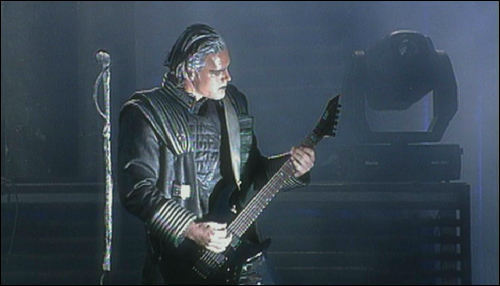
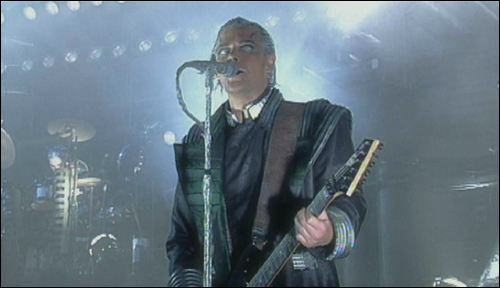
1.4) For his outfit during the Reise Reise tour in 2004/2005, Richard settled for a black military-style coat. The button rows seem to be reminiscent of french military uniforms from the 17th and 18th century (as well as the button lines and the embroidery on the collar of the underjacket) and his pants were designed in a similar style. The lining of the coat is bright red, a theme which would occur numerous times over the years.
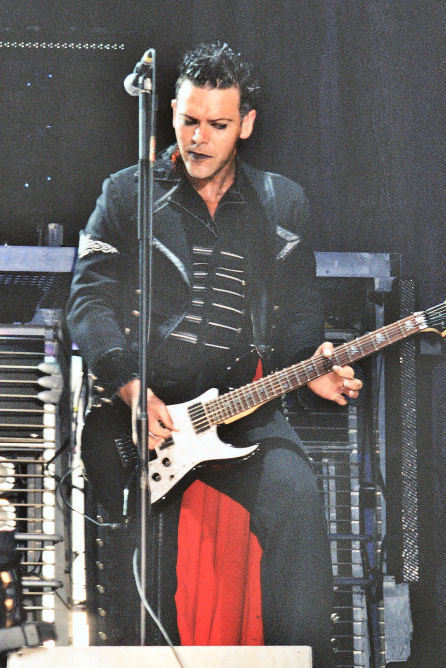

1.5) During the LIFAD tour, Richard wore a grey-mottled coat made out of a somewhat leathery material, adorned with silver buttons and a red armband - again he incorporated a red element in this coat, just like with the one before. On a sidenote: He once mentioned that Michael Jackson was an inspiration for this armband because Richard liked the cool look of it - his leg-belts (visible in the right picture) also kind of resemble the harness Michael wore on stage and in some videos during his Bad era.
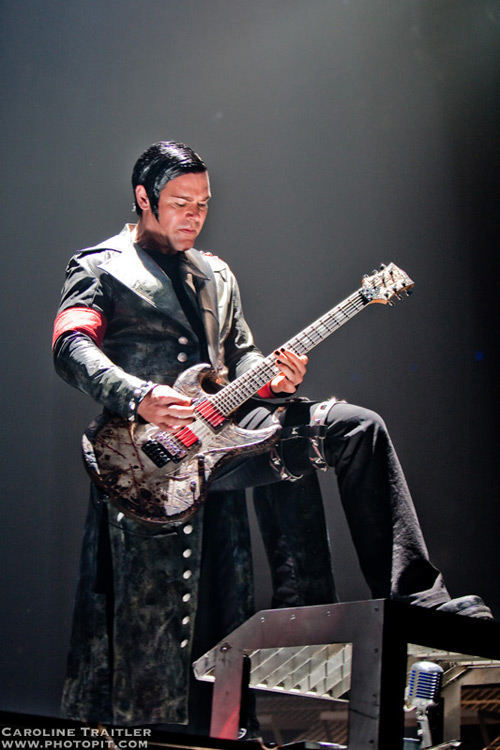
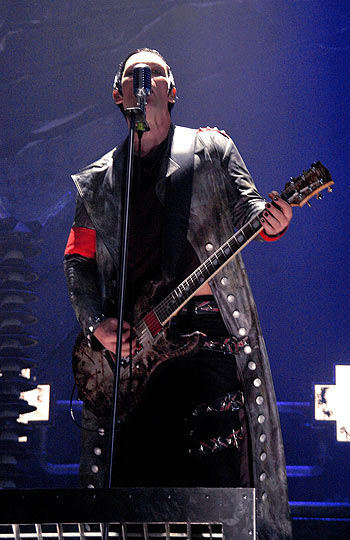
1.6) An absolute personal favourite of mine: The studded coat Richard chose for the 2013 part of the Made in Germany tour, oftentimes paired with the torn black and red top underneath. This one also got red lining, as well as a fine red line near the cuffs of the coat.
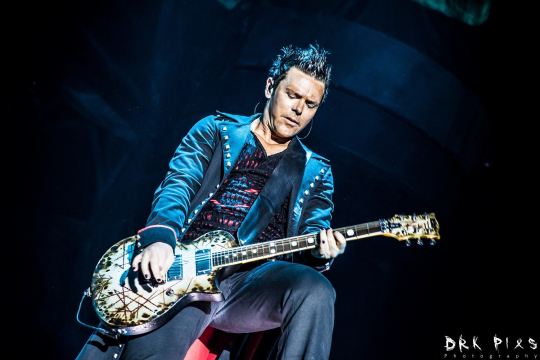
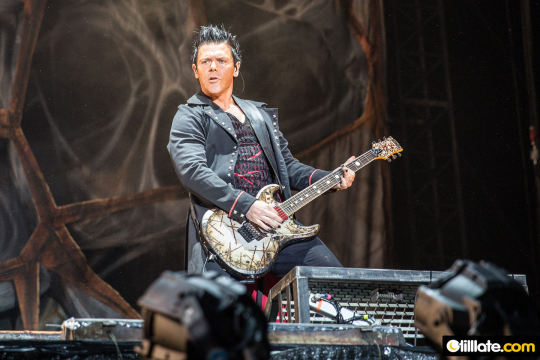
1.7) In 2016 for the Festival tour, Richard wore coat in a more cosy and snuggly style, which marked a break in the clean cut coat-aesthetic up to this point. It was more in the style of a cardigan with a zipper instead of buttons. The armband made a reappearance as the signature red element (mirrored by a red band on his pants), and red lines along the seams added this colourful accent.
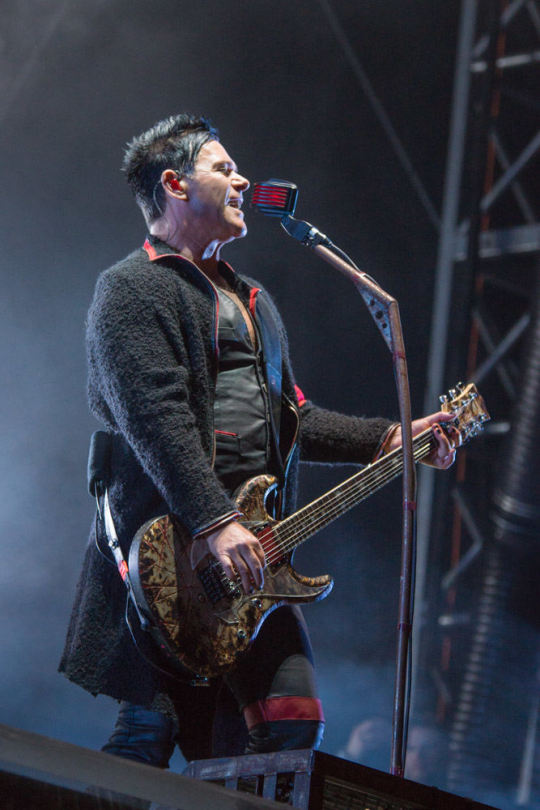

1.8) For the 2019 tour leg of the Stadium tour, Richard mixed things up by wearing a two piece combo made out of a leathery material, with a studded cap on the right shoulder and red elements in form of the usual arm band and a red folding in the front. The lower part of this outfit was removable, so the upper part remained as a jacket.
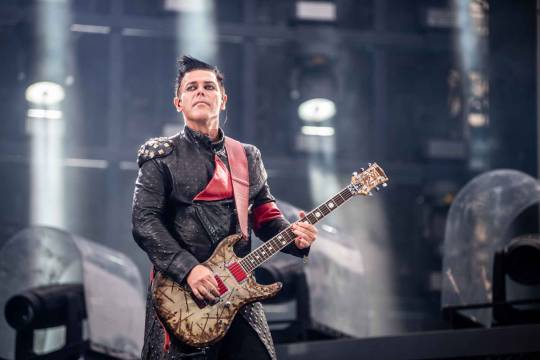
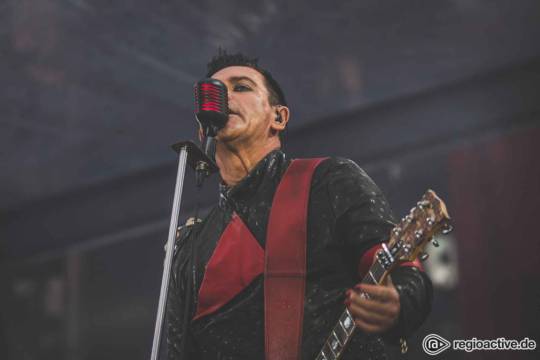
1.9) In 2022, he wore an all black coat with a belt and flaps along the shoulders, as well as snap fasteners as buttons; it overall resembled the typical look of a trenchcoat and seemed less rigid then the previous ensemble.
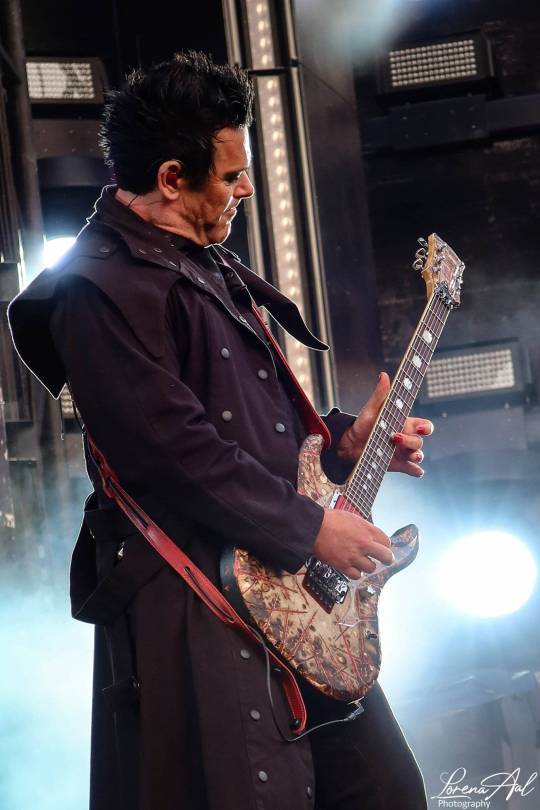

1.10) A true fandom favourite appeared on the scene in 2022 when he presented the infamous chicken coat. This one was already known from the "Freeze my mind" music video (from 2021) from Richard's side project and other band Emigrate. Different than in the music video, where a vest completed the look, Richard again after years went on stage without any outfit under it. This coat was used by him also during this year's tour leg.

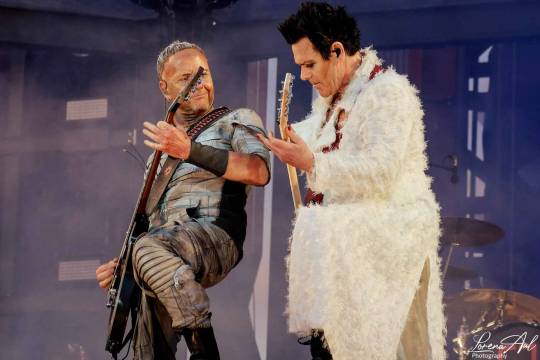
1.11) Another personal favourite of mine is the black coat with red lining which he wore during this year's tour. Affectionatly dubbed "the vampire coat", this coat appears to be quite clean cut and simple, but has a very nice and dramatic effect on him (choosing gifs this time to underline this sentiment).

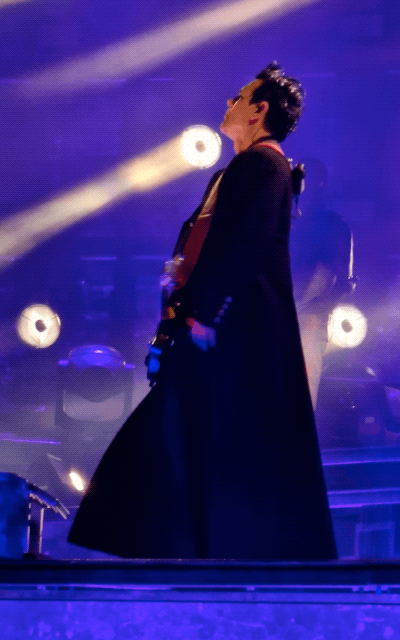
2.) Richard's coats off stage
Here are some of the coats Richard wore off stage during band fotoshoots and outings. Not counting normal jackets or parcas here.
2.1) The fur-lined coat during the Rosenrot fotoshooting:

2.2) The reoccuring black coat with fluffy fur elements, worn by him while being presented with awards in 2005 in Berlin as well as during the Echo award show in 2009:
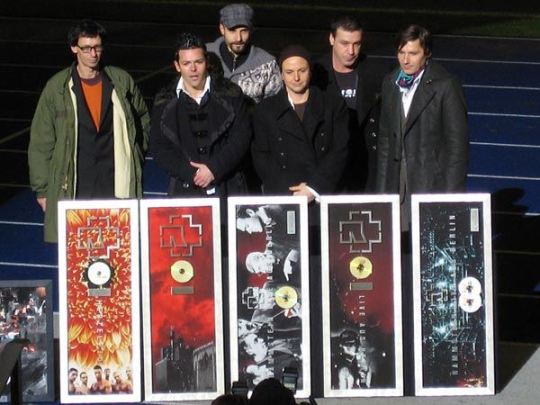

2.3) He wore another black coat which looked pretty similar to the one before but is still slightly different during a signing in Paris 2004:

2.4) And a brown/beige kind of trenchcoat was his style of choice for the Fashion rock night in 2009:
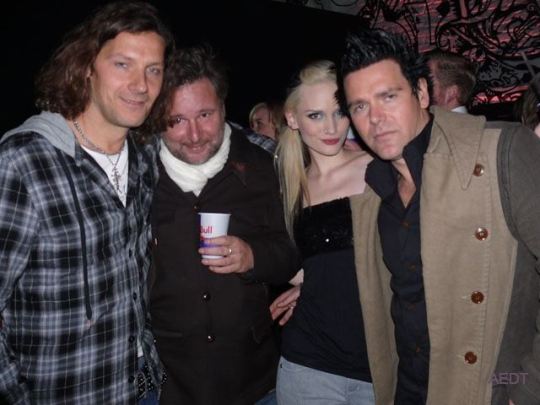
2.5) During the outdoor shooting for the LIFAD album, Richard wore another black coat:
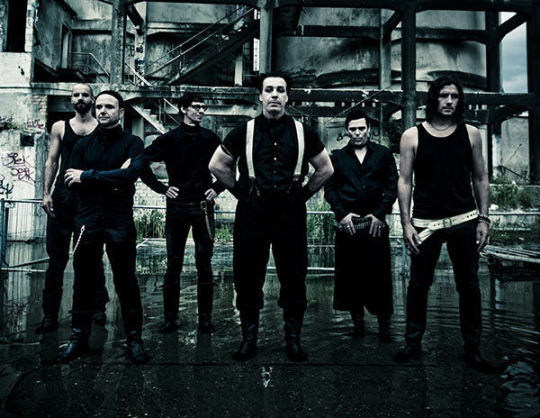

2.6) And lastly, the fancy embroidered coat Richard chose for promotion pictures for (I think) his first album with his band Emigrate:
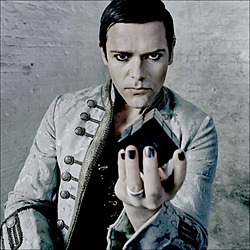
Not sure if I was thouroughly enough and found every coat he ever wore, but I think the presented ones here really express his love for this piece of clothing in general 😊 I'm looking forward to either seeing a new coat on Richard next year or a return of his vampire coat 🦇 (Still hoping to see the studded coat someday again).
(Used picture sources: Rammwiki and the Rammsteinworld gallery - wonderful rabbit holes to get lost in.)
#rammstein#richard kruspe#richard's fashion lore#half his penthouse is filled with coats by this point i guess#this took me about 3 days to compile and i had so much fun no joke#thank you for this ask 💜#ask#richard's coats#emigrate#kruspe fashion
65 notes
·
View notes
Text
Dating a Jacket, Part 1
The Eighteenth-Century Assumption
Part 2 here
Sometimes you come across a piece of clothing and the date just seems a little too ambiguous. That was the case with this jacket, number 1981.314.2, held by the Metropolitan Museum of Art, which is said to be from the 2nd quarter of the 18th century. The good people at the Costume Institute within the Met were kind enough to take detailed photos of the jacket for me, including details of construction. These images were invaluable in allowing me to create my own version, but have also given me some questions about their chosen date. I am not allowed to share the images they took for me without express permission, so if necessary I will include photos from my own jacket.
First, let us remind ourselves of what the jacket looks like:


Left: jacket, Italian, 1981.314.2. Dated 2nd quarter 18th c. Metropolitan Museum of Art. Right: my own recreation of the same jacket.
The Met gives the original jacket a moderately wide date range of 2nd quarter of the 18th century, so between 1725 and 1750. And I can see what influenced them to make that decision. At first glance, the overall shape has strong similarities with the examples below of wide-necked riding jackets.


Left: Casaquin, textile 1710-1720, garment 1720-1730. Right: Casaquin, c. 1730-1740. Both from Palais Galliera


Left: Agnieszka Emercjanna Pociej ascribed to Ádám Mányoki, before 1722. Right: Lucy Pelham-Holles by Godfrey Kneller, 1722.


Left: Sophie Marie von Voss by Antoine Pesne, 1746-1751. Right: Maria-Antonia von Fürstenberg by Franz Josef Weiss, 1758.
Please note, however, that regional fashion changes do exist and none of the examples are Italian. I could not find any images of similar jackets from Italy. If anyone does have images of riding habits/jackets from Italy in the first half of the 18th century, I'd love to see them! However, these images do show at least a moderate geographic distribution of this trend: France, Germany (Prussia and Swabia), England, and Poland. All of the examples feature a wider neckline than the close-to-the-neck style found in men's coats and in some other women's riding jackets, and also feature metallic trim embellishing the front and cuffs. So far, so good, right? Well--let's dig deeper.
First, what do I mean by "riding jacket?" I am using the phrase to denote these and other women’s jackets from the 17th and 18th century that are inspired by menswear and originally used for the purpose of riding and hunting. Some of you may be more familiar with the term "riding habit" in which the jacket is worn with a matching petticoat and maybe a waistcoat to create a complete outfit.
Many of these jackets have trends directly borrowed from menswear like pockets and button-fronts, and fasten at the center front without a stomacher. However, as riding jackets and riding habits became an acceptable part of fashionable dress, some of these characteristics may have been adapted, or vanished almost entirely, as is the case with the two French casaquins seen above. These jackets represent the way that practical garments adapted to fashionable tastes. You can see Mme Gaspard de Peleran wearing a very similar jacket in this sketch by Liotard–its equestrian nature is denoted by the long riding whip she holds in her hand.

Madame Gaspard de Péleran by Jean-Etienne Liotard, est 1738-1742 (my estimate is based on Liotard's residence in Turkey from 1738 to 1742, where the subject's husband was French Consul in Smyrna)
So where do my doubts about the Met's jacket come from? Well, it's mainly the construction. When we look at extant riding jackets, however, the vast majority of the (admittedly few) originals have front waist seams, something absent from my own. The brocade casaquin above? waist seam. The pink casaquin? can't say, hidden by lace, could be either. This 1730-1750 riding jacket from the Snowshill Wade Costume collection was even patterned in Janet Arnold's Patterns of Fashion Volume 1, pp 24-25, so you can really see the waist seam:


Whether plain or ornate, you'll probably find a waist seam!


Left: Riding Jacket, 1740s, John Bright Collection. Right: Riding Coat, 1750-1759, V&A Museum.
I found exactly one riding jacket which clearly does not have a front waist seam, and it's from very early in the period:

Jacket, 1710-1725, Palais Galliera.
If we look at paintings, we do find a few more examples that seemingly don't have a waist seam. Some of these might be artistic license or simply the artist not wanting to paint every single seam, but I'm inclined to believe at least some of them, like this painting by Nicholas Lancret:

Picnic After the Hunt (detail) by Nicolas Lancret, 1735-1740, National Gallery of Art.
Why do I trust it? The waist wrinkles. Ask me how I know...

Okay, so, a waist seam of lack thereof isn't proof one or the other about dating. But there are other oddities of construction as well. For instance, looking at this picture of my own jacket, do you see the pocket? These pockets have no flap and are cut straight across, whereas every other example I've shown so far has a pocket flap. This is much more in keeping with men's coats from the same period:


Left: Coat, British, 1720s, Met Costume Institute. Right: Coat, German, 1720s-1730s, LACMA.
Also, where are the rest of the buttons? The jacket held by the Met has 100 buttons total--33 along the front, 8 along each pocket, and 17 along the side and back vents. These men's coats, the most button-heavy of all the examples shown here, have buttons along the fronts, below the pocket flaps, and along the top cuffs, but none running along the vents:


In addition, the Met jacket has large contrasting cuffs, which does not seem to be as much an element of jackets from the 2nd quarter of the 18th century, unless it matched a waistcoat.



Top: Le Repas au retour de la chasse (detail) by Nicolas Lancret, c. 1725. Bottom Left: Anna Katarzyna Orzelska by Louis de Silvestre, c.1730. (red waistcoat matching cuffs is just visible at front opening below lace). Bottom Right: Coat, c. 1735, National Museums Scotland.
None of these cuffs have a heavy trim around the edge though, like the pleated pink ribbon and silver braid on the Met's jacket. It is possible that the cuffs and trim are a later addition, but just comparing the braid on the cuffs to the braid on the rest of the jacket, they appear to be the same 4-strand silver metallic braid.


While this does not rule out the possibility that they were an addition made at a different time, it does make it, in my opinion, most likely that the cuffs are contemporary to the rest of the jacket. In addition, most cuffs of 1725-1750 jackets and coats are cut separately to the sleeve and then attached, whereas the cuffs of my jacket are cut in one with the sleeve and folded back.
So where does that leave us? Well, the Met appears to be correct in noticing that wide-necked riding jackets are largely a phenomenon of the early-to-mid 18th century. The large turned-back cuffs and lack of a waist seam would probably push this earlier in their proposed date range, closer to the 1720s than the 1750s. In my next post, however, I will introduce another possibility--what if the jacket is earlier? Maybe even much earlier?
Part 2
Additional Resources:
Images of more riding jackets found at the 18th Century Notebook from Larsdatter
@vincentbriggs has detailed posts on 1730s coat construction here and here, and in general is a font of knowledge for 18th-century tailoring.
jeannedepompadour.blogspot.com has a good collection of images of early 18th-century riding jackets.
Janet Arnold, Patterns of Fashion vol 1. Originally Published 1972, reissued 2021 by School of Historical Dress.
12 notes
·
View notes
Text
Illinois Family Vacation: A Journey Through 7 Must-Visit Destinations

Whether you're an Illinois native or just passing through the Land of Lincoln, there's no denying that Illinois is jam-packed with some truly magical family vacation spots. If you're keen on discovering the state's hidden gems or revisiting some classics, you're in for a treat. Embark with us on an Illinois family vacation as we explore seven must-visit destinations that are sure to leave lasting memories. Let's dive in. shall we?
1. Chicago: The Windy City Wonders
Ah, Chicago. It's not just a city; it's an experience. The skyline itself, with architectural marvels stretching towards the heavens, tells tales of a city rich in history and culture.
Your first stop? Millennium Park. Here, the iconic Cloud Gate, affectionately known as "The Bean," offers a distorted reflection of the city and the sky, providing a fun photo opportunity for families. Just a hop, skip, and a jump away is Navy Pier.
Whether you're taking a nostalgic ride on the Ferris wheel, grabbing a bite of deep-dish pizza, or simply basking in the mesmerizing views of Lake Michigan, Navy Pier is a treat for all ages.
And for the budding scientists and marine lovers in the family, institutions like the Field Museum and Shedd Aquarium await a world of discovery. Dinosaurs, mummies, colorful fishes, and aquatic shows… Chicago keeps the magic alive at every corner.
2. Starved Rock State Park: Nature's Playground
Imagine a place where the whispers of history combine with the beauty of nature; welcome to Starved Rock State Park. Located just outside of Chicago, it's an oasis that feels worlds away. Trek along the winding trails and you'll be rewarded with views of majestic waterfalls, some cascading from heights of over 80 feet.
In the summer, these falls are surrounded by lush greenery, making them perfect spots for family picnics. Winter? It transforms the park into a wonderland with frozen waterfalls and icy canyons. Whether you're an avid hiker, bird watcher, or simply someone looking to escape the hustle and bustle, Starved Rock promises a serene retreat.
3. Springfield: A Dive into History
Now, let's journey back in time to Springfield, where stories of yesteryears echo through the streets. At the heart of it all is the legacy of Abraham Lincoln. Visit the Lincoln Home National Historic Site, where the rooms are preserved just as they were during Lincoln's time. Each artifact, from the furniture to the children's toys, paints a picture of the personal life of this great leader.
But the journey doesn't end there. Dive deeper into his life and legacy at the Abraham Lincoln Presidential Library and Museum. Interactive exhibits, historical artifacts, and immersive displays bring history to life with travel therapy.
And before you leave, pay your respects at the Lincoln Tomb, the final resting place of the 16th president. Springfield is not just a city; it's a living history book.
4. Galena: A Historic Getaway
Ah, Galena. With its picturesque landscapes and old-world charm, this quaint town feels like stepping into a postcard. As you stroll through the historic Main Street, you're transported back to the 19th century, thanks to well-preserved buildings housing boutique shops, cafes, and galleries.
History buffs, did you know Galena was home to Ulysses S. Grant, the 18th president of the United States? His home, now the Ulysses S. Grant Home State Historic Site, stands as a testament to his life and times.
But Galena is not just about history. Surrounding the town are rolling hills, offering opportunities for hiking, cycling, and even hot air ballooning. Whether you're seeking a romantic escape or a family adventure, Galena's timeless charm is sure to captivate you.
5. The Great River Road: A Scenic Drive Like No Other
Fasten your seatbelts and get your favorite road trip playlist ready: it's time for the legendary Great River Road. Stretching alongside the Mississippi River, this scenic byway is often dubbed 'America's Best Drive'. And it's easy to see why.
As you meander along, you're greeted with sweeping river vistas, charming small towns, and historical landmarks. Each bend in the road reveals a new scene: a riverboat chugging along, eagles soaring high, or a vibrant sunset painting the sky. With quaint B&Bs, delicious dinners, and numerous viewpoints along the way, the drive is not just about the destination; it's about each mesmerizing moment you encounter.
6. Peoria: Where City Meets Serenity
Peoria is that delightful blend where urban excitement meets riverside tranquility. Located along the Illinois River, Peoria offers a bustling downtown that's alive with theaters, cafes, and galleries.
Start your visit at the Peoria Riverfront Museum, a spot where art, history, and science converge in interactive exhibits that captivate both kids and adults. Once you've had your fill of indoor fun, head outdoors to Grandview Drive, often called the "world's most beautiful drive." It offers panoramic views of the river valley below.
And if you're visiting with children, the Peoria Zoo is an absolute treat. With animals from around the world, it's a little safari right in the heart of Illinois.
7. Six Flags Great America: A World of Thrills Awaits
Feel that? It's the unmistakable rush of adrenaline as you step into Six Flags Great America. Located in Gurnee, this theme park promises a day (or more) of non-stop fun and excitement. Whether you're a roller coaster enthusiast ready to conquer the latest thrill ride or seeking gentler fun with the little ones, there's something for everyone.
Dive into Hurricane Harbor, the park's water wonderland, where slides, lazy rivers, and wave pools offer a refreshing escape. And don't miss out on the various shows, games, and eateries that sprinkle the park. Each visit to Six Flags is a new adventure, waiting to be lived.
Dreams and Wishes Travel: Your Passport to Unforgettable Experiences
Looking to elevate your travel game? Dreams and Wishes Travel is your answer. Imagine having your vacation tailored to your heart's desires, every single detail crafted to perfection. From adrenaline-packed adventures at Universal Parks to serene stays at the world's most luxurious all-inclusive resorts, we've got you covered. For more details visit us at https://www.dreamswishestravel.com/.
But what truly sets us apart is our meticulous approach. Through personalized conversations, we dive deep into understanding what makes your heart race, be it a sunset dinner on a beach or a magical day at Disney. Armed with this insight, we craft an itinerary that's uniquely yours.
And guess what? Our commitment doesn't end once you set off. With our special app, we're with you at every step, ensuring your vacation remains as magical as you dreamed it would be. With Dreams and Wishes Travel, it's not just a vacation; it's an experience etched in golden memories.
Conclusion: The Perfect Illinois Family Vacation Awaits
There you have it. Seven spectacular destinations in Illinois that promise unforgettable experiences for the whole family. And, when you're ready to venture beyond the state or even take a magical trip to Disney, remember that Dreams and Wishes Travel is here to guide and support you every step of the way.
So, what are you waiting for? Let's get your dream vacation started.
Read More:
The Triple-City Whirlwind Tour: Dive into Miami, Tampa, and Universal Studios Orlando Resort on a Budget
Discovering Hawaii: 5 Family-Friendly All-Inclusive Resorts You Must Visit
A Perfect Family Vacation in California: Top 7 Theme Parks to Explore
0 notes
Text
El Fascinante Mundo de los Automóviles
🚗INTRODUCTION🚗
Greetings, car enthusiasts and lovers of speed! It is a pleasure to welcome you to "Automobile World", your definitive destination to explore the exciting world of four-wheeled vehicles. Whether you are an avid car fan, a buyer looking for wise advice, or simply someone who finds the automotive universe fascinating, this blog is designed for you.
In "Car World," we'll take you on an exciting journey through in-depth reviews of the latest models, explorations of the most advanced automotive technologies, practical tips for maintaining your vehicle, and a look at the world's rich and diverse history. motoring.
Have you ever wondered which car is perfect for your needs? Do you want to know the latest trends in electric vehicles or autonomous vehicles? Or perhaps you are looking for tips to keep your vehicle in optimal condition? You will find all that and much more here, in "Automobile World".
This blog is not only a place to learn and explore, but also to share our passion for cars. I hope you find inspiration, valuable information, and a place to join the conversation about the cars we are passionate about.
So fasten your seat belt and get ready for an exciting journey through the amazing world of automobiles. You are about to embark on a journey that will take you along roads full of knowledge, excitement and admiration for these ingenious engineering achievements!
Thank you for joining us on "Automobile World"!
youtube
CARROS DE DRIFT
CATEGORIES
•Elite Sports Cars": A category that includes both the Nissan GT-R and the Toyota Supra, as well as other high-performance sports cars
•Automotive Technology": This category could include articles about the technological innovations present in these cars and how they affect performance.
•Sports Car Comparisons": Here you could make detailed comparisons between different models, such as the GT-R and Supra, to help readers make informed decisions.
•Modifications and Tuning": If you plan to talk about how to customize and improve the performance of these cars, this category would be appropriate.
•Motor Culture": Where you could explore the history and community surrounding sports cars, as well as related events and exhibitions.
•Model Reviews": This category would allow you to do detailed reviews of specific models, such as different editions of the GT-R and Supra.

HIS STORY
17th - 18th Century: The earliest concepts of self-propelled vehicles emerged with inventors like Leonardo da Vinci, who designed plans for self-propelled carriages. However, these early designs did not materialize into functional vehicles.
19th Century: The true era of automobiles began in the 19th century with the invention of steam and internal combustion engines. In 1885, Karl Benz built the Motorwagen, considered the first gasoline-powered internal combustion engine vehicle. This marked the start of the modern automotive industry.
1890s - 1900s: During this period, several automobile manufacturers started to emerge in Europe and the United States. Henry Ford, in particular, revolutionized car production with his introduction of the assembly line in 1913, enabling mass production of affordable cars like the Model T.
1920s and 1930s: This era saw significant advances in terms of car comfort and performance. More aerodynamic car bodies were developed, and features like automatic transmissions were introduced.
1940s and 1950s: The post-war period witnessed a boom in car production, with modern and stylish designs. Cars began to incorporate safety technologies, such as seatbelts.
1960s and 1970s: These years saw the rise of iconic high-performance sports cars like the Ford Mustang, Chevrolet Camaro, and Porsche 911. Compact and economical cars also gained popularity.
1980s and 1990s: Advances in electronics and computing led to more sophisticated control systems in cars. Japanese cars gained popularity due to their reliability and efficiency.
21st Century: Technological advances have continued to be a key part of the car's evolution in the 21st century. Electric vehicles, autonomous driving, and connectivity are some of the prominent trends in today's automotive industry.
The history of cars is a narrative of innovation and technological advancement over centuries. Each era has been marked by significant changes in design, performance, and safety, leading to the wide variety of cars available today.
CARRROS En 1885 y 1886

CARROS EN LA ACTUALIDAD

As we reach the end of our thrilling journey through the world of automobiles, I hope you've enjoyed exploring the history, innovations, and the sheer excitement that vehicles bring to our lives. As we move along the road of life, remember that the open road still calls, and there will always be new horizons to discover. Keep the engine spirit alive and continue to explore new adventures on wheels. Until next time, fellow car enthusiasts! 👋🚗
0 notes
Text


Episode 1 (also the main promo image), the blue suit
One of Stede's fanciest outfits, definitely designed to make it clear that he's from a completely different world from his crew. Not a coincidence that he's not wearing the coat anymore at the end!
I would rate it 8/10 in historical accuracy. The long coat is great! Coats in the 1710s were pretty long, generally to just below the knee. It lacks a collar, which was the norm until very late in the century, and it has big cuffs, which were an option. The braid (trim) is in the right place, and the buttons run all the way down the front as is proper. The main thing I would complain about is the cut - coats in this period were made like giant sacks, no waist seams and definitely no vertical darts. But these make it more fitted which is both more flattering to Rhys Darby and more flashy for the Gentleman Pirate.
Waistcoats were also made rather long and square, ending a few inches above the knee, so ... this one is more of a 1770s cut. BUT I love that it's blue, but a different blue than the suit, and a busier damask.
This kind of cravat, a long band that ties loosely and then drapes down, was fashionable in the late 17th and early 18th centuries (until about the 1730s). This much lace on it was out of style by 1717, though (and it's eyelet lace, like the cuffs, which is also minus points because that's really more of a mid-19th century thing; otoh it's better than cheap acrylic galloon lace which you see a lot in 18th century productions). The black necktie on top is not period at all, but a) the stripe of black against the white and light blue is A+ aesthetically and b) we all know what happens with it eventually and what it symbolizes, A+++++.
Shoes in this period fastened with buckles rather than ties, but these are so cute. T_T I adore the way the bows look when he's perched up on the capstan with his legs crossed.
Fun fact, stockings were usually worn over the bottom of the breeches until the 1730s as well. It looks awkward so I don't blame costumers for going with smooth stockings and breeches buckled over them.
(I will be doing this until I get bored and forget.)
#ofmd#our flag means death#ofmd costuming#me: a new blog a new start#also me: let's analyze costumes for historical accuracy and meaning!!!
33 notes
·
View notes
Text
Hello and welcome to part 3.5 of historically ever after the series of posts were I break down little bits of historical inspiration in ever after highs outfits because if we’re all going to spend all our time on the internet obsessing over a cartoon meant to sell dolls to little girls we might as well learn some stuff wile we’re at it.
Ravens Ruffs
(I’m very proud of that title)
Ok some background first.
What are typically known as Tudor ruffs or Elizabethan ruffs according to most of my sources started around the 1570s and apparently in the beginning they were just a little frilly bit around the collar, but they eventually got bigger, and bigger, and bigger.

okay, in fairness these extreme proportions weren’t that common in day to day life but it’s still really funny.
These ruffs were so huge they had to be supported by wire frame.
Rich wemen in particular would ware some pretty large ones and some would were these big fan shaped ones with an opening at the front. I always like to call theses ruffs half ruffs but that’s not what they’re actually called, I don’t think there’s a proper name for them.

Anyway the point I’m trying to get to is that Raven wears a lot of these.

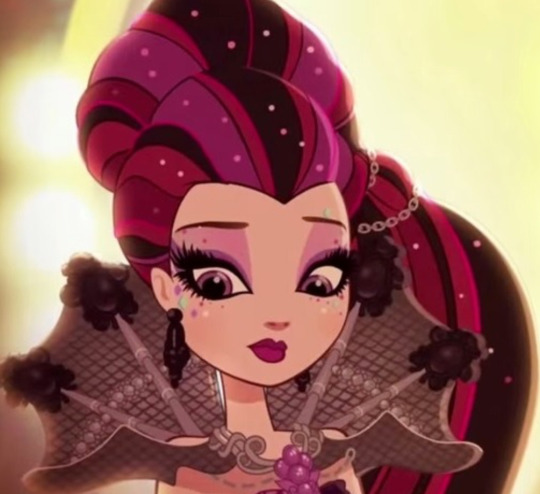


The looks so iconic it’s starting to catch on


I count the one on her main outfit as a collar not a ruff simply because of the shape. It kind of surrounds her neck rather than goes round the back of her head.
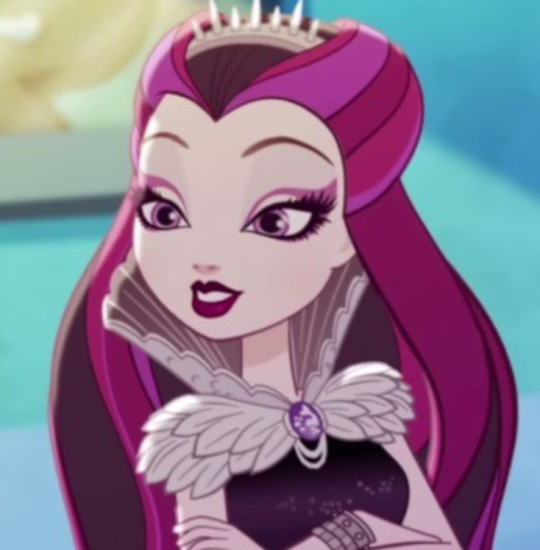
It’s also alluded to with the turned up collar on her date night outfit.
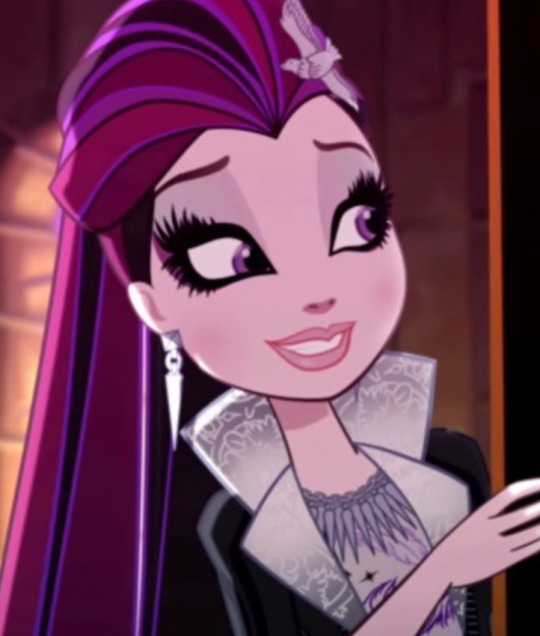
And after that I was really stumped on what to write next because that was really all I could see. There were a few little things that were neat character design choices but they weren’t history related so I figured it didn’t belong in this post. But then I rewatched legacy day and took another look at her outfit OMG.

There is so much to break down. First thing I noticed was the opening at the front, these were fairly common in elizabethan gowns.

Then there’s the frills at the hips which reminded me of the pleats you sometimes see at the top of some noblewomen’s skirts in paintings.

And also the fabric patterns on her cape and the opening of the dress are very similar to the fabric patterns and embroidery of the time (the opening especially).
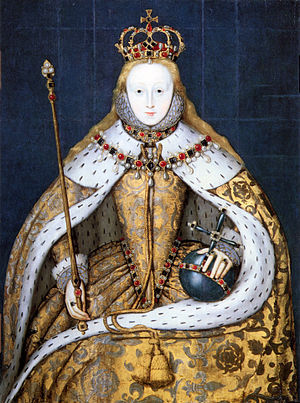
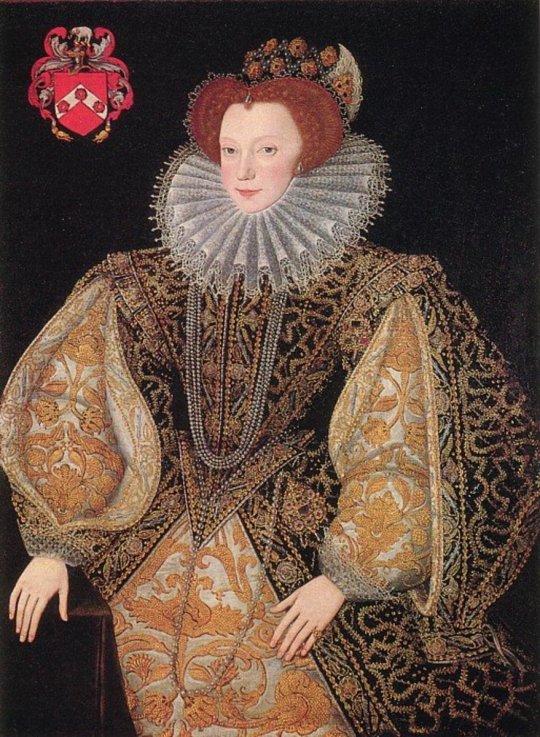
I was also able to find some paintings that show some jewellery that looks very similar to the chains she’s wearing.

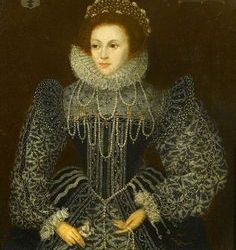
And the brooch / fasten of the cloak looks fairly similar to some Tudor brooches, it has the beautiful elaborate frame with a jewel in the centre which matches most Tudor brooches I’ve seen so even though it doesn’t look exactly like one it’s similar enough.


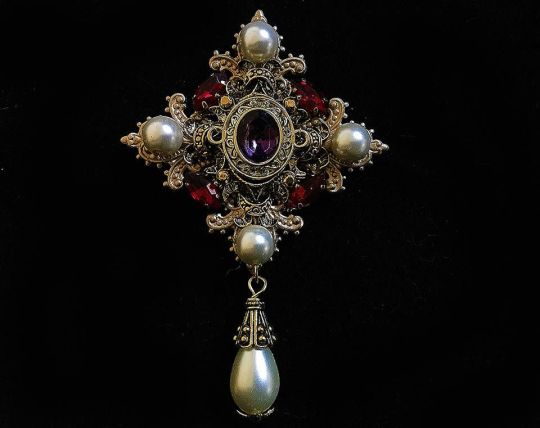
have I mentioned how much I love Tudor brooches.
One other thing I noticed is the sleeves on their dressing gowns (or night robe or whatever you want to call it) resemble these big bell like sleeves from some dresses in the earlier Tudor era

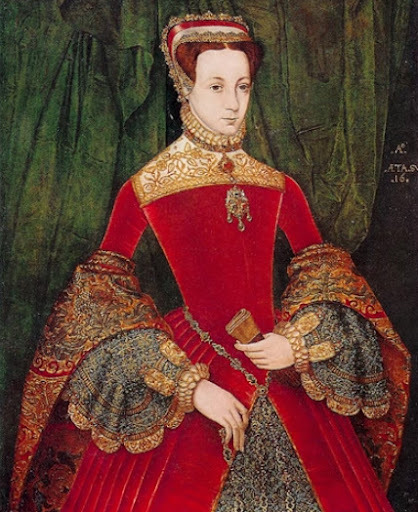
But in the cartoon they more resemble the ruffled sleeves of the 18th century
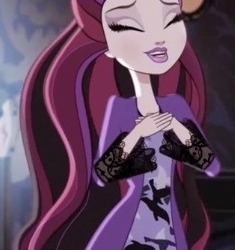

this isn’t really that surprising, the dolls and the cartoons often have subtle differences designs which is why you’ll often notice in these posts that I go out of my way to find screenshots rather than just using the concept art that’s much easier to find. In this case I think that it’s simply because the smaller sleeves are easier to animate.
And that just about raps things up. As always feel free to correct me or add something if you want.
Part 0.5 Part 1 Part 2 Part 4
109 notes
·
View notes
Text


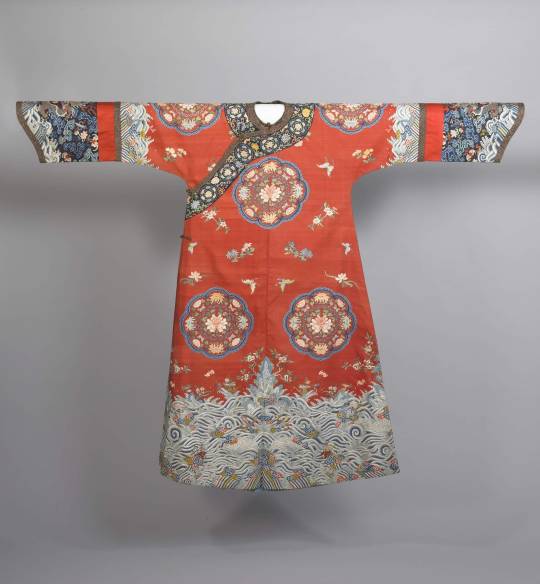
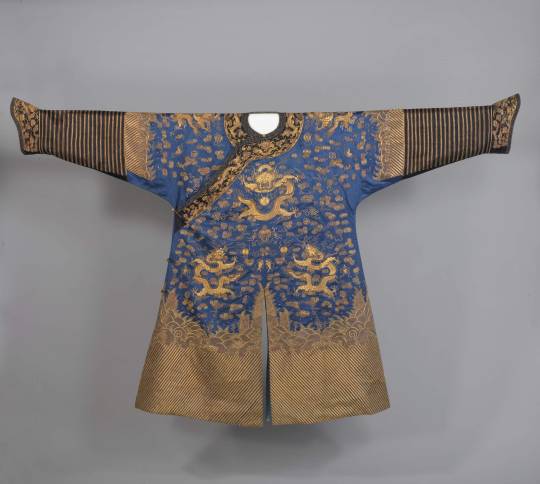


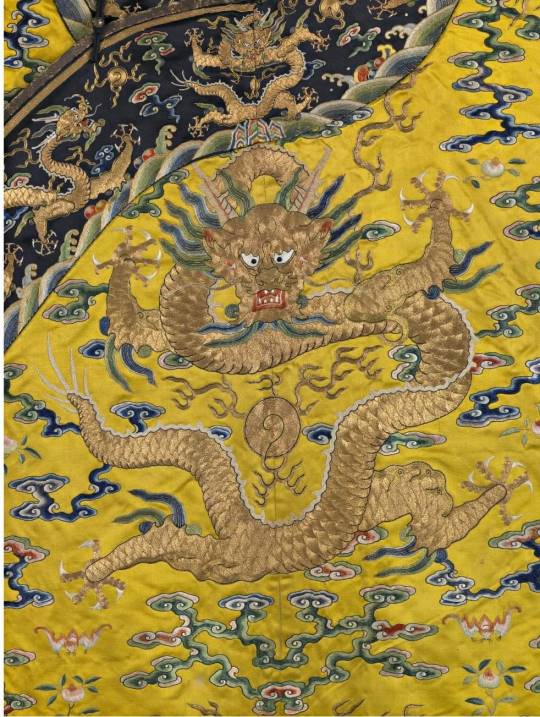

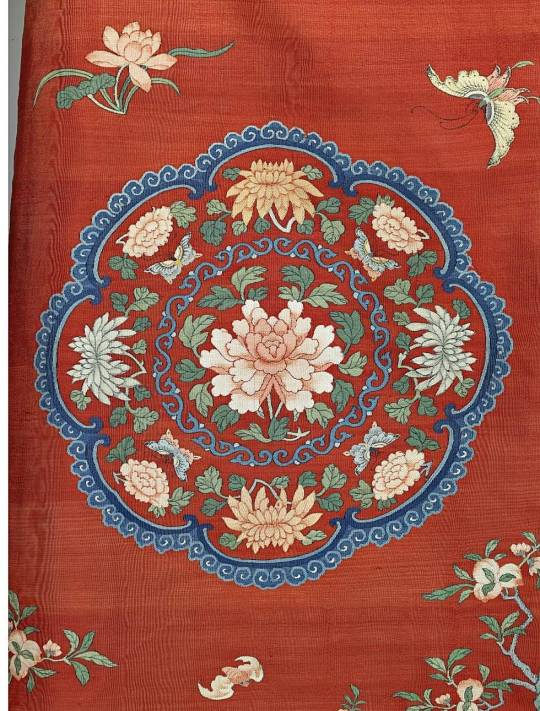

D'Artagnan.
Chinese robes from the St Louis Museum of Art. My favourite is #1 ❤❤❤
What amazes me apart from the beautiful embroidery and details is how these silks have been so well preserved considering their age ; particulalry #2 #3
#1 Red woman's jacket Qing dynasty, 1644–1911 late 19th century
Silk damask, applied embroidered satin borders, satin stitch, French knot, gold foil wrapped thread embroidery.© St Louis Museum Art
#2 Chinese Qing dynasty, 1644–1911 Yongzheng period, 1722–1735 early 18th century
Embroidered and brocaded silk with silk and metallic threads
This bright yellow satin robe is meticulously worked on the front and back with eight five-clawed dragons (long) pursuing flaming pearls, with a ninth dragon hidden on the front underflap. Auspicious bats fly over rolling waves and mountains.
The stylized stripes of deep water at the hem are finely embroidered in shades of green, blue, and white, with intervening gold threads. The undulating waves above them are satin-stitched with two or three colors mixed in any given band, producing a spectacular effect of shading. The slightly flared deep blue satin "horse-hoof" cuffs are decorated with dragons and multicoloured clouds above waves, as is the neck band. The garment's slits on front, back, and sides indicate an imperial rank of the highest order.
54 15/16 x 75 1/16 in. (139.5 x 190.7 cm)© St Louis Art Museum
#3 Chinese woman’s informal court robe Qing dynasty, 1644–1911
Qianlong period, 1736–1795
mid- to late 18th century
Silk tapestry (kesi) with metallic threads and pigments
length: 58 1/2 in. (148.6 cm)
This full-length robe has a front overflap fastened with four gilt metal ball-and-loop toggle buttons. The straight sleeves end in deep, slightly flared cuffs. The eight multicolored lobed floral medallions each contain a peony surrounded by other peonies, chrysanthemums, and butterflies. Scattered against the red silk ground are sprays of seasonal flowers. The turbulent waves at the bottom of the robe are rendered in the so-called "hurricane style." Rising from either side of the central mountain are traditional symbols of long life, indicating that the robe was worn to celebrate a significant birthday. The "Eight Precious Things" floating on the waves and the bats in flight are additional auspicious elements.© St Louis Museum Art
#4 Chinese Manchu blue robe
Qing dynasty, 1644–1911 Guangxu period, 1875–1908 late 19th century
Embroidered silk with silk and metallic threads
neck to hem: 53 9/16 in. (136 cm)
arm span: 88 3/16 in. (224 cm)
The body and upper sleeves of this court robe are decorated with nine five-clawed dragons, clouds, mountains, waves, all in gold against a blue ground. In the scattered scheme are the eight Buddhist emblems of good fortune, cloud scrolls, swastikas, and character medallions reading shou ("longevity"). The stylized "standing water" pattern is completely linear; the thin bands are characteristic of late-19th-century style. The tapered sleeves, in black twill with yellow ribbed pattern, end with flared "horse-hoof" cuffs. The neck band and cuffs have imperial imagery of dragons, waves with the "Eight Treasures," cloud scrolls, and bats against a black ground.© St Louis Museum Art
#5 and #6 details #4
#7 and #8 details #1
#9 Detail of #3
#10 Back of #1
Love D'Artagnan xxx".
4 notes
·
View notes
Photo
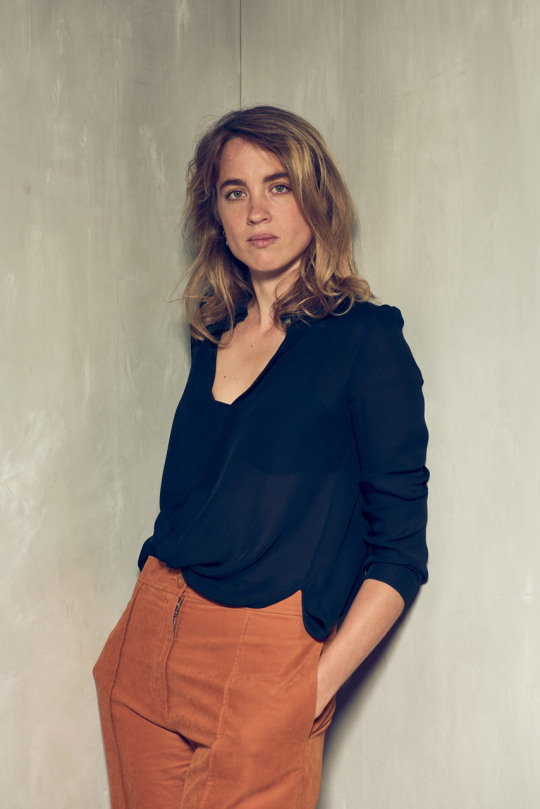
Translated interview with Adèle Haenel, heroine of “Portrait of a Lady on Fire”
Performing in order to richly live the now
Tomoko Ogawa, in: Ginza Mag, 3rd of December 2020 Translation by Rose @rosedelosvientos 🙏🏾
Set in 18th-century France, the daughter of an aristocrat who refuses marriage and a female painter who makes her portrait - two people of different social status - meet and fall in an unforgettable love that will last for a lifetime.
In the film “Portrait of a Lady on Fire”, Héloïse, an aristocrat, is played by Adèle Haenel, who, as an actress, always thinks, acts and decides constantly for herself. Late last year, she filed a complaint against the director for sexual abuse during/after her first film debut 18 years ago. At the César Awards, she protested and walked out after Polanski won Best Director, which shook the world of French cinema and is also still fresh from memory.
This film is also the work of Céline Sciamma, the director of Water Lilies, in which Adèle Haenel also appeared. Adèle recounts her thoughts about her current film, and director Sciamma’s “Female Gaze”, who, for many years was also her partner in her private life.
Q: Last year, “Portrait of a Lady on Fire” opened and was screened in Europe, and won Best Screenplay at the 72nd Cannes Film Festival. A year and a half has passed since then. Do you feel the magnitude of this work’s influence on women empowerment?
A: If put this way, people might think that it may be too subjective, but I think that not only this film, but Céline Sciamma’s works have constantly played a role in empowering women. But, it was understood that, surely, there’s also a way - that it’s possible to show the worldview of equal love between women from a different perspective, in a history where there are a lot of films that contained an element of women being controlled unilaterally from men’s point of view.
Q: Not dominance, but the joy of collaborating and creating something with someone, and the love that continues to grow is depicted in this film. What do you think sets it apart from many other films that have depicted love until now?
A: Until now, love has been depicted in ways such as controlling the other person, and in a sensual manner, but in this film, the nature of love is kinda different, I guess. The two women who happen to be in that place - while interacting extemporaneously using language that is characteristic of themselves and figuring each other out - are building up their relationship. While it’s fictional without altering historical facts, it’s a proposal that’s entirely different from what love looks like until now. I think that it’s a film that brings with it a new perspective.
Q: It’s not a one-sided view from the painter’s perspective where the person whose portrait is being painted is the “muse”, but rather of both sides looking at each other, and the connection of being seen is depicted. I think that you’ve also been called a “muse” up to this point, but during those times, do you remember how you felt then?
A: The word “muse” is used against actresses as a stereotype, and there were people who did say that to me that but, even if I were called a “muse”, I’ve come to be aware of not taking that position that’s being asked. That’s because even if it’s the director who’s directing, ultimately it’s up to the actors how they perform something while working together with different actors. So, you’re supposed to actively consider how you build up the character relationships artistically, politically, all aspects. In the first place, it’s not acceptable that in most films it’s the men looking, and the women being looked at, so even for things that aren’t visible on the surface, I constantly think and make decisions for myself.
Q: Tell us about the charm of Céline Sciamma as a director.
A: She has a very clear perspective, doesn’t she? She’s a person who can raise all sorts of questions and kinda make you rethink various ideas, not about how reality is, simply, but beyond those ideas that are based on the reality that there is. She’s also a visionary, and she understands the wonder of fiction, and has philosophical ideas.
Q: In this film, you were also able to apply the relationship of trust that you’ve built with your partner, at the time, through the course of many years.
A: That’s right. I’ve been friends with her for as long as 15 years, and of course she was also my partner, and that’s because I’ve been collaborating artistically for many years. This time, in the script, too, the character of Héloïse was written with me in mind. So since we’ve already built that trust with each other, there was no need to talk about every little thing, like, “I’m thinking of doing it this way”.
Q: This film has a mostly female staff, such as director Céline Sciamma, cinematographer Claire Mathon, Hélène Delmaire, the female artist who carried out the painting on-screen, etc. What do you think about its significance?
A: From the very start, this film’s intent - especially since the relationship between women hasn’t really been presented as something very important - is to focus the spotlight on women across history who weren’t written about. This time, an axis (focal point) has been put together by the film crew for the women who properly understand that importance, so there’s a part where the production did really well, I think.
Q: Through this film, is there anything that you discovered about yourself?
A: I don’t think in a way like, that there was a discovery or change just because of the role that I played. Basically, I’m the type of person who keeps moving and doesn’t stand still, who constantly asks and answers my own questions, and raises issues. Whichever work it is, I perceive them in one of those processes.
Q: I see. In the midst of constant movement, what is your primary motivation as an actor?
A: Meeting with people with whom I can collaborate with is a big one. Whenever I work with new people, I’m made to realize that there’s also such a different way of depicting (t/n: lit. “drawing”) the world. That there is a way to richly live the now, that is in film and art in general. That also motivates me.
Q: With all this motivation that’s hitherto been given to you by the director, do you think that it’s because you both share a common perspective?
A: Since I take the responsibility myself when I perform, there’s no such thing as being influenced by the director. I’m a person who doesn’t really care (t/n: I’ve a feeling ‘give a shit’ is what she really wanted to say here) about hierarchy, and the people whom I can really respect are those persuasive people who have a clear perspective, and, within the silence, can properly show what they want to talk about. Directors who give hints to the actors on how they can arrive at the reality that they’re thinking they want to depict more. I’m thinking that actors don’t express form, rather, their role is to explore the expounding of their own vocabulary. So a person who has a clear vision of what they want, and what they want to draw is amazing, in my opinion.
Q: Finally, all the handmade dresses have an impression that they’re being fastened thickly and heavily, but how do you think the costumes influence your acting?
A: When I wear the costumes, I feel like a pilot in the Star Wars series (laughs), so as we handle the costumes that we’re given, I really think about how I’m going to move while in it, you know? The one we had was a basic dress, but at first there was a feeling of nervousness, a tense kind of stiffness. But as the story went on, I try to be aware that the movements of the dress will become a bit softer along with my facial expressions. Even if it’s the same costume, I performed while feeling that change of heart.
“Portrait of a Lady on Fire” Original Title: Portrait de la jeune fille en feu Director: Céline Sciamma Cast: Noémie Merlant, Adèle Haenel, Luana Bajrami, Valeria Golino Music: Jean-Baptiste de Laubier Distribution: GAGA 2019/France/122 mins./Colour/Vista/5.1 Digital Channel Dec. 4, 2020, TOHO Cinema Chanter, Bunkamura Le Cinéma Nationwide Screening © Lilies Films https://gaga.ne.jp/portrait/
Profile Adèle Haenel Born in January 1, 1989 in Paris, France. Attended theater classes at 13 years old. In 2002, debuted as the heroine Chloe in Les Diables. In 2007, her name became more well-known after being nominated for Most Promising Actress at the César Awards. Furthermore, she was also nominated for her role in House of Tolerance (2011), and for Suzanne (2013), achieved Best Supporting Actress, and won Best Actress for Love at First Sight (2014) – becoming one of the actresses representing the world of French cinema both in name and substance. Her major appearances also include The Unknown Girl (2016) and Bloom of Yesterday (2016), among others.
***
Translated excerpt from ’“Portrait of a Lady on Fire” - Approaching the True Face* of Adèle Haenel’
Atsuko Tatsuta, in: Madame Figaro Japan, 4th of December 2020 Translation by Rose @rosedelosvientos 💜
(*t/n: may also mean the 'true nature’ of AH. Literally it means bare face with no make-up.)
“A woman who has an adventurous spirit, while living under constraints.”
Interviewer: Marianne and Héloïse are depicted as contrasting characters, aren’t they? From the outset, when the canvas falls from the boat, Marianne jumps into the ocean in order to retrieve it. Héloïse, which you performed, has never gone into the sea despite living in the island. How did you interpret the contrast between this free and conservative way of living?
Adèle Haenel: Marianne and Héloïse were indeed depicted contrastingly. Not just marriage, but Héloïse is a person who’s lived within various restrictions. But, as the story progresses, you’ll understand that actually she’s a character who is highly curious, and also has an adventurous spirit. People tend to think that she’s dull and lacks vigour, but it’s soon understood that up to this point, in reality, her actions are coming from a place of being shackled. Playing the transformation of such a character was very interesting.
#rosedelosvientos#Ginza Mag#Madame Figaro Japan#Adèle Haenel#Céline Sciamma#Noémie Merlant#Portrait of a Lady on Fire#December 2020#Japanese article#Translation#A spirited woman#Thank you so much Rose#long post
95 notes
·
View notes
Text
Re: Bridgerton
tonyglowheart just the promo looked exhausting bc they had this lady with this big blue powered 18th century looking hairstyle but like.. why? and her dress was maaaybe 18thc but costumey looking and I was like. what is going on
tonyglowheart also skdmd did they rly try to do a tightlace scene with regency stays. regency stays dont even look vaguelh corset-y, I???
YUP. So for some UNKNOWN reason all the court people are wearing 18th century dresses while everyone else is in regency. It’s supposed to be 1813. I honestly just...don’t know. Because those costumes do look at LOT worse than the rest. A lot of the regency stuff is actually very nice, unless it’s on one of the Evil Stepsister Mean Girls, in which case it’s over decorated and gaudy. I mean, this isn’t Pride and Prejudice and Zombies where everything looks like they got it at David’s Bridal and there’s miles of poly satin. Like I’m willing to allow for inaccurate hairstyles (even though some are just ugly) and accessories and fabrics to an extent, when you’re clearly trying to use the costuming to tell a story. Fine.
But, like, WTAF with some of it. And yes, they actually in several places have fairly accurate regency stays but they 1)don’t have any chemises under them, ever. And 2)try to tightlace them in at least two scenes. (I’m only halfway through.) Which, there’s barely any bones in regency stays, and they’re not shaped for waist shaping, because you’ll FUCKING NOTICE, there are no waists in regency dresses!!! They’re basically more comfortable spanx in that they are there for smoothing under the dress.
They even have a nice scene with a modiste inserting a wooden busk into the front of the stays. Yes! Lovely! And then she tries to squeeze the girl down with the corset to fit the measurements of her dress. As if there isn’t several feet of extra room in the damn thing. PANT PANT.
And like the lack of chemises includes when characters are supposed to be in bed or sleeping, so they have back-fastening fitted white gowns that show off their boobs and are EVEN SHOWN going to bed in their stays. (Stays UNDER the nightgown of course, because yes.)
Look I get you want cleavage and support but sERiousLY. Imagine showing a modern woman sleeping in her very fancy bra. Might as well have her in bed in high heels while you’re at it.
Like, there’s historical accuracy not being your goal and then there’s, like, outright ANTAGONISM for historical accuracy. Like you’re literally TRYING to alienate anyone who knows anything about the period. And for me it’s just so detrimental to my suspension of disbelief.
Like, I have NO problem with having lots of high status characters of color, or the handwavy in-universe explanation for it. That does not harm my ability to believe the period-ness of it at all. What DOES is the lack of freaking chemises. And the idea that a highly fashionable queen would wear clothes most of a century out of date.
Like, I want to enjoy this show. And I am, to a certain extent. But it’s so much EFFORT. To constantly refocus my attention on the scenes and not the errors. (And that’s not even getting into the writing decisions I find completely unbelievable.)
79 notes
·
View notes
Photo






My custom historical character Eleanor has a few jackets and skirts to wear already, but I also had to make her some time period-appropriate undergarments and accessories to complete her 18th century wardrobe.
Girls like Eleanor would have worn corsets starting in infancy. Her corset is made from a scrap of floral corduroy, and has flat wooden crafts sticks sewn into the lining to give it proper rigidity. In Eleanor’s time this was called boning and often used whale bones to reinforce the corset. I used an eyelet puncher to make the lacing in the back and it laces tight with a black faux leather cord.
She’s also wearing a white petticoat I made from an old bedskirt, and a bumroll that I stuffed with pillow stuffing. The bumroll ties in the front with a ribbon tie that I tucked into the waistband of her petticoat. Her pocket, which fastens around her waist, utilizes embroidery I cut from a vintage pillowcase. Skirts and dresses used to be made without attached pockets, and so a separate pocket was tied around the waist. Slits were sewn into the side of the skirt so that one could reach one’s hands through the skirt and into the pocket.
Her stockings are made from an old thermal shirt, and she uses pale pink ribbons as garters, which held up stockings before elastic was invented. This fabric works great for stockings since it stretches and has a nice patterned look to it. I made her shoes with scraps of blue leather that I hot glued together. I used rolled aluminum for the buckles and chipboard for the inner soles. I looked at Felicity’s black shoes to get an idea of the pattern and did my best to replicate the pieces.
I’m letting Eleanor keep Marie-Grace’s nightgown to wear as a shift, since Marie-Grace never really wears it. I was delighted to find it for $1 last year at a charity thrift shop, buried under a pile of vintage Barbie clothes.
63 notes
·
View notes
Photo



Letter Cases (France, 18th century).
1) White silk letter case embroidered in silks and metal threads. Fastening of silk and metal braid with tassels; lined with pink silk.
2) Ivory satin letter case embroidered with flowers in silks and metal threads, trimmed with metallic bobbin lace.
3) Silk letter case embroidered in silk and metal threads with paste jewels and spangles on a white satin ground, with yellow silk lining and silk tassels at corners .
Images and text information courtesy Cooper Hewitt, Smithsonian Design Museum.
Catalog Photo
Wikimedia.
124 notes
·
View notes
Photo
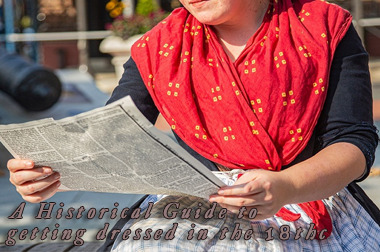
A Historical Guide to | Getting Dressed in the 18th Century [ 1701 - 1800 ] Part 2 Outer Garments !! Female Clothing | Middling - Lower Class | Colonial England - Colonial North America Styles
Check out part 1 here!
Hi friends! I hope you are well. This is part 2 of a historical guide to getting dressed in the 18th century. This got long so there will be a part 3 for everything else. :)
I wanted to share this with you because a lot of what people know of historical costuming is based on tv shows, like Outlander, Poldark, Turn, or Harlots &c. … While some of the clothing is based off extant garments that did exist, many hollywood productions take extreme creative liberties that are not historically accurate to the time period. This post will contain the outer garments and all the correct terms that you may want to include when describing your characters clothing or the way their body moves in the clothing in rpgs. Clothing standards and trends did evolve over the the course of the 18th Century and did vary widely based on social class status, location, religion, race, ethnicity, nationalities and cultures.
For the majority of the English / American experience during the 18th Century, most would have been of the Middling - Lower social class; working class as trades people, farmers, servants, slaves or employed by the military in various different occupations [want a guide?] .
Assume everything was hand sewn using either linen, or silk threads, with linen, wool, and some cotton prints (and more!) materials. If you have specific questions about materials please ask.
If you have any other questions please ask me. I can help you with research :) If you are interested please continue reading more…
This list is in order of first layer to last.
Everything a woman wore in the 18th century was either tied or pinned on, with the exception of riding habits, worn while on a journey on horseback. If a person had the means to have a set. Riding habits mimic the males style with buttons and were often accompanied with a waistcoat, a long sleeve shift, and petticoats that matched the riding habit.
PETTICOATS also known as “the skirts” or “skirt”, a term which did not come into use until the mid 19th century. Would have been worn by all classes of women during the 18th century. The Petticoat is worn in such a way where the two bands and petticoat ties are tied around the front of the body. Women would wear at least two - three layers of petticoats with the first usually a light-weight linen so it can be laundered if needed. Other layers could be made from worsted wool, flannel, linsey woolsey, hand quilted silk, hand quilted flannel or a documented cotton print of petticoat to match the outer gown of the same print.
GOWN As stated at the beginning of this post, clothing for the individual person varies widely in size, style, shape, and color. The outer garments are no exception. The style of gown that we’ll focus on is an English style gown, which includes a stomacher and robings, the most common style for the majority of the 1760’s - 1770’s. Gowns varied from location to location and from culture to culture. Gowns could be made from any material such as silk, lightweight wool, linen, linsey woolsey, printed cotton, or printed calico and chintz.
BEDGOWN | Bedgowns became a staple in British and American wardrobes and not usually seen until the later half of the 18th Century. They are most appropriate for early morning and nighttime wear as they are described as a ‘wear-at-home’ clothing item. Bedgowns can be made from different kinds of fabric such as worsted wool, wool flannel, documented cotton print, linsey woolsey, and linen. Bedgowns of the period come to just about thigh length, and are often topped with an apron to finish the outfit.
APRONS While aprons can be a decorative item of clothing for a woman’s wardrobe as it was the outermost layer that was first visible, aprons can be described as a utility item of clothing. They not only help close all the layers around the body but could be used to protect the other layers from getting dirty. Since aprons were the first line of defense for the other layers they were most commonly made from linen in order to be laundered and were made from a in a variety of patterns and colors, such as blue or brown check, small stripes or solid white. Plain worsted wool aprons were also documented in this era. Aprons should be narrowly hemmed around the edges and be long enough to meet the length of your petticoat or just an inch shorter. All material should be stroke gathered into a narrow waistband of the same fabric and should fasten with narrow linen or hand loomed tapes around the waist and tied in the front of the body.
CAPS There are many different styles of caps and the style of the cap is up to the individual. Caps would always be worn to cover most of the hair, sitting at the crown of the head, secured to the hair with straight pins. Caps would have been made out of a very thin (nearly transparent) bleached white linen, and decorated with a silk ribbon.
SILK BONNETS Were one of the more popular style of hat worn on the east coast with an overwhelming amount of women and children having one. According to the blog kittycalash and her post A Bonnet, Universally Acknowledged: “ Brim shape and bonnet material— fabric and colour– vary by period (and region). So let’s look at Boston in the first years of the 1770s. One tricky bit is that there are fewer indentured servants and enslaved people in Boston than elsewhere in the American Colonies in this period, so runaway ads are scarce, giving us fewer clues than we get in Pennsylvania and points south. Still, there are plenty of ads to help guide us … Most bonnets (70%) were black, but a few white, green, crimson, and blue were seen. Most bonnets were made of silk satin, with others of taffeta or sarsnet (sometimes twilled silk). Most bonnets would have a shorter, higher brim that curves across the face just above eye level, with a high, rounded crown/caul and bow trims. Bonnet brims would vary between bonnet (paste) board and boned. ”
CLOAKS | Cloaks most commonly appeared in red and blue, but also may be cream, gray or black. The hood may be lined in a white or color matching silk, wool, or linen and the closures should be made from period correct hook and eyes or ties. The Edges may be faced in wool plush or matching silk. Period appropriate gimp may also be used. Cloaks could be in a variety of lengths as well otherwise known as a “short cloak”.
image by wickersty [ more to come in a part 3! ]
13 notes
·
View notes
Text
𝒮𝑒𝓇𝓋𝒾𝒸𝑒 𝒮𝓊𝓃𝒹𝒶𝓎: Not Finished!
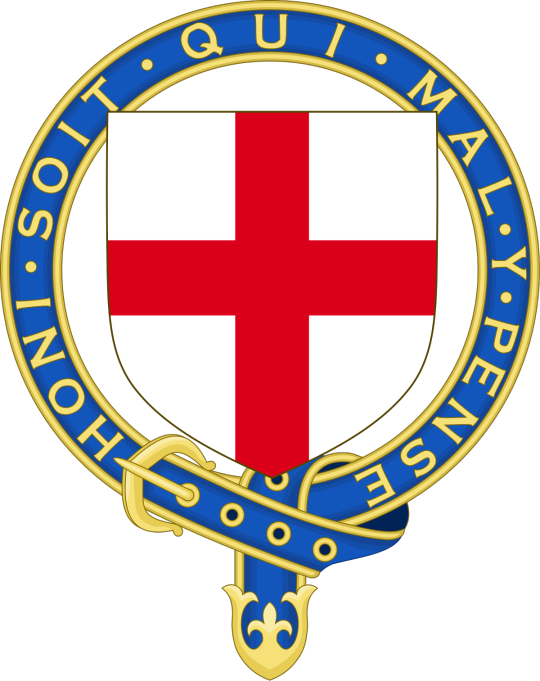
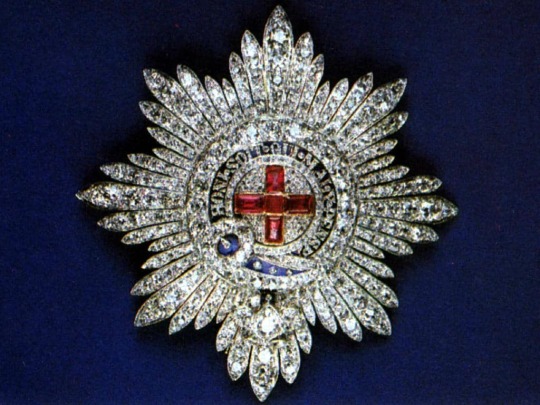
𝐻𝑜𝓃𝑜𝓇
The Most Noble Order of the Garter
~~~~~~~~~~~~~~~~~~~~~~~~~~~~~~~~~~~~~~~~~~~~~~~~~~~~~~~~~~~
𝐻𝑜𝓃𝑜𝓇 𝑅𝒶𝓃𝓀
The Most Senior Order of Knighthood in the British Honors System. This honor outranks The Victoria Cross & The George Cross,
~~~~~~~~~~~~~~~~~~~~~~~~~~~~~~~~~~~~~~~~~~~~~~~~~~~~~~~~~~~
𝐹𝑜𝓊𝓃𝒹𝑒𝓇
King Edward III of England in 1348
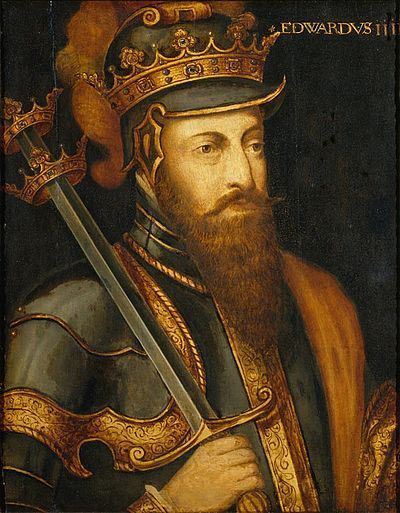
~~~~~~~~~~~~~~~~~~~~~~~~~~~~~~~~~~~~~~~~~~~~~~~~~~~~~~~~~~~
𝐻𝒾𝓈𝓉𝑜𝓇𝓎 𝑜𝒻 𝓉𝒽𝑒 𝐻𝑜𝓃𝑜𝓇
𝒯𝒽𝑒 𝒞𝓇𝑒𝒶𝓉𝒾𝑜𝓃
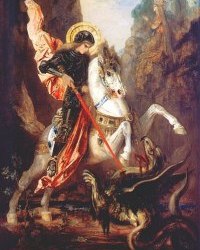
The Order of the Garter was created on April 23rd, 1344 & was created to help King Edward’s claim to the French throne. The Order is dedicated to Saint George because he is the Patron Saint of England. The Most Noble Order of the Garter was inspired by the Spanish Order of the Band, which was created in 1330.
𝑀𝑒𝓃𝓉𝒾𝑜𝓃𝓈 𝑜𝒻 𝒯𝒽𝑒 𝒢𝒶𝓇𝓉𝑒𝓇 𝒾𝓃 𝐹𝒶𝓂𝑜𝓊𝓈 𝒲𝓇𝒾𝓉𝓉𝑒𝓃 𝒫𝒾𝑒𝒸𝑒𝓈

(Joanot Martorell)
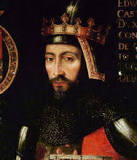
(John of Gaunt Duke of Aquitaine)
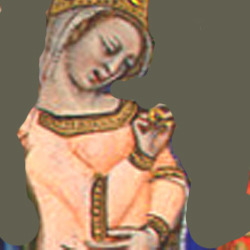
(Countess Isabella of Bedford)
The earliest mention of The Most Noble Order of the Garter was mentioned in Tirant to Blanch by Joanot Martorell, a chivalric romance piece of literature (A literary genre of high culture), which was written in Catalan (Now called Valencian Language) in 1490. King Edward III’s wardrobe shows that Garter habits first issued in 1348. The Middle English poem “Sir Gawain & the Green Knight,” which was written in the late 14th century, mentions The Most Noble Order of the Garter. In the poem, a girdle is very similar to a garter (in an erotic way). The poem also mentions a different version of the Order’s motto which is written “Corsed worth cowarddyse and couetyse bope,” which translates to “Cursed be both cowardice and coveting.” The author of the poem is argued by scholars but there is a connection between two candidates: John of Gaunt Duke of Aquitaine & Enguerrand VII de Coucy. Enguerrand was married to King Edward III’s daughter Countess Isabella of Bedford & was received the Order of the Garter on their wedding day.
~~~~~~~~~~~~~~~~~~~~~~~~~~~~~~~~~~~~~~~~~~~~~~~~~~~~~~~~~~~
𝐿𝑒𝑔𝑒𝓃𝒹𝓈
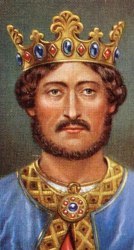
(King Richard 1 of England)
Various stories & legends surround the origin of The Most Noble Order of the Garter.
The most popular story involves Catherine (Grandison) Montagu The Countess of Salisbury. It is said, that the countess’s garter slipped off from her leg, while she was dancing at a court ball that took place in Calais, France. When the garter slipped from the countess’s leg, courtiers laughed & just watched the scene happen. The King saw what had happen & returned the garter to the Countess exclaiming “Honi soit qui mal y pense!" Which translates in English to “Shame on him who thinks ill of it!” This is saying that is written on the The Most Noble Order of the Garter.
The earliest written story dates back to the 1460′s. A garter in the mid-14th century, was seen mostly as a item of male attire. Looking back on the story, the garter (that was seen as item of female underclothing), actually has the garter stated as a symbol of a band of knights.
A 2nd story is connected to King Richard I of England. In the 12th century, King Richard was inspired by St. George the Matyr, while he was fighting in the Crusades (A series of religious wars in Western Asia & Europe between the 11th & 17th century). The king tied garters around the legs of his knights, who won the battle. King Edward, recalled the story of King Richard during the 14th century when founding the The Most Noble Order of the Garter. This story is actually recounted in a letter to the Annual Register (A long-established reference work, written and published each year, which records and analyses the year's major events, developments and trends throughout the world) that was written in 1774.
~~~~~~~~~~~~~~~~~~~~~~~~~~~~~~~~~~~~~~~~~~~~~~~~~~~~~~~~~~~
𝒟𝑒𝓈𝒾𝑔𝓃 𝑜𝒻 𝒯𝒽𝑒 𝐸𝓂𝒷𝓁𝑒𝓂
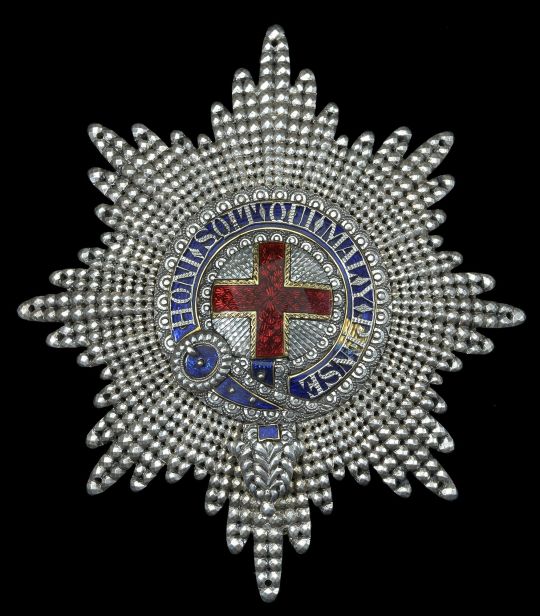
The emblem for The Most Noble Order of the Garter is a garter with a written Middle French Moto that says "Honi soit qui mal y pense” which means “Shame on him who thinks evil of it” & the motto is written in gold lettering. The motto refers to King Edward’s claim to the French throne. The use of the garter with the emblem, derived from straps that are used to fasten armor & was chosen because of the tight-knit “band/bond” of Edward’s knightly cause supporters.
~~~~~~~~~~~~~~~~~~~~~~~~~~~~~~~~~~~~~~~~~~~~~~~~~~~~~~~~~~~
𝑅𝑒𝒸𝑒𝒾𝓋𝒾𝓃𝑔 𝓉𝒽𝑒 𝐻𝑜𝓃𝑜𝓇
𝒯𝒽𝑒 𝒞𝒽𝑜𝑜𝓈𝒾𝓃𝑔 𝒫𝓇𝑜𝒸𝑒𝓈𝓈
Each member would nominate 9 candidates who have the rank of either Earl or higher (3 members), have the rank of Baron or higher (3 members), & have the rank of Knight or higher (3 members). The Sovereign then personally chooses as many nominees that as necessary to fill any vacant spots in the current Order of the Garter. But with the nominees comes a decision. The Sovereign (He or She), are not obliged to choose the nominees who received the most nomination counts. This practice ended in 1860. Today, before receiving the The Most Noble Order of the Garter, an appointment is made with the Sovereign (A.K.A: The Queen) at sole discretion.
𝒯𝒽𝑒 𝒞𝒽𝑜𝑜𝓈𝒾𝓃𝑔 𝒫𝓇𝑜𝒸𝑒𝓈𝓈 𝐻𝒾𝓈𝓉𝑜𝓇𝓎
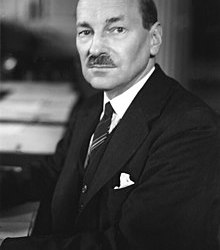
(The Right Honorable Clement Attlee 1st Earl of Attlee)

(The Right Honorable Sir Winston Churchill)
During the 18th century, the Sovereign would choose those to serve on The Most Noble Order of the Garter, by the advice of the current Government. In 1946, membership of the United Kingdom’s highest ranking orders of Chivalry (The Most Illustrious Order of Saint Patrick, The Most Noble Order of the Garter, & Most Ancient and Most Noble Order of the Thistle) became a personal choice of the Sovereign once again, with the joint agreement of Prime Minister The Right Honorable Clement Attlee 1st Earl of Attlee & The Leader of the Opposition The Right Honorable Sir Winston Churchill.
The person being appointed to the Order is announced on April 23rd which is known as St. George’s Day. When created, it was said that the original status required that each member of the Order already be a knight (now referred to as a Knight Bachelor). The initial members were knighted the year, the order was created.
~~~~~~~~~~~~~~~~~~~~~~~~~~~~~~~~~~~~~~~~~~~~~~~~~~~~~~~~~~~
𝒪𝓇𝒾𝑔𝒾𝓃𝒶𝓁 𝑀𝑒𝓂𝒷𝑒𝓇𝓈
(Each Members photo will be below their name)
Male members of The Most Noble Order of the Garter are titled “Knights Companion.”
♕ Sir Sanchet D’Abrichecourt
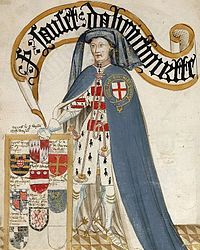
♕ Edward, The Black Prince, Prince of Wales
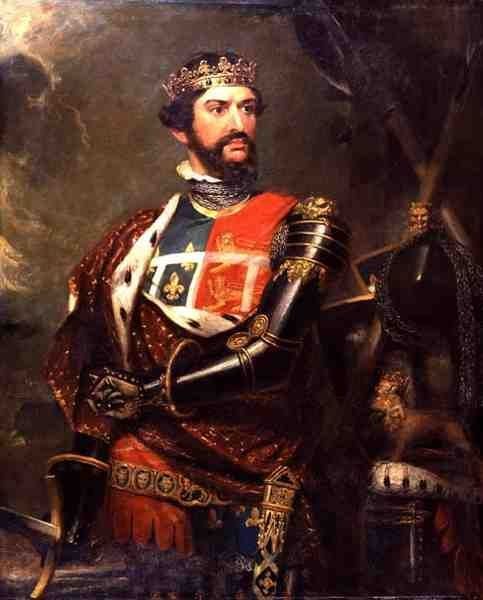
♕ Henry of Grosmont, 1st Duke of Lancaster
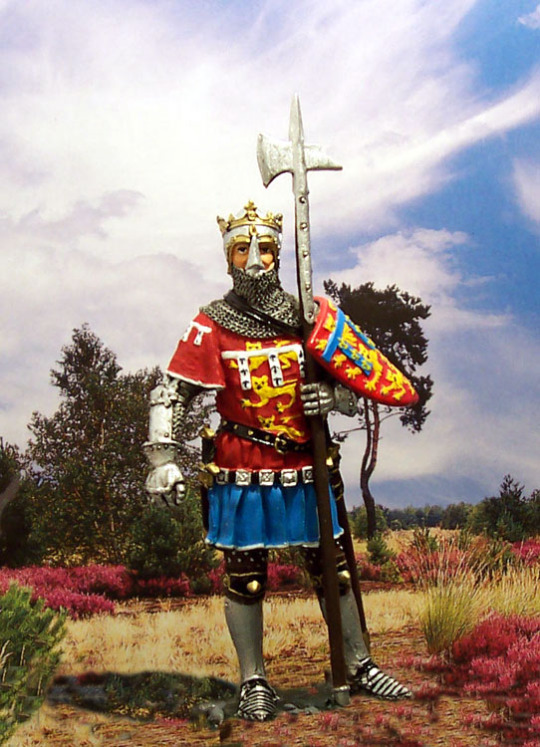
♕ Thomas de Beauchamp, 11th Earl of Warwick
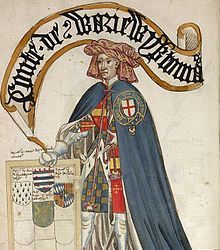
♕ Jean III de Grailly, Capital de Buch
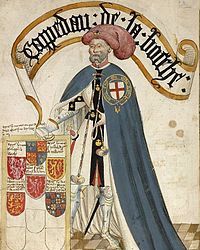
♕ Ralph Stafford, 1st Earl of Stafford

♕ William de Montagu, 2nd Earl of Salisbury
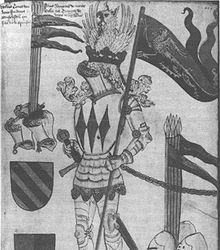
♕ Sir Roger de Mortimer, 2nd Earl of March
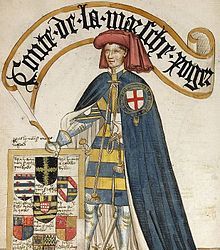
♕ John de Lisle, 2nd Baron Lisle of Rougemony
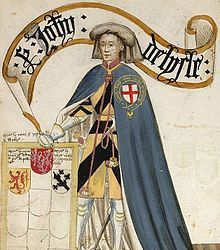
♕ Bartholomew Burghersh, 2nd Baron Burghersh
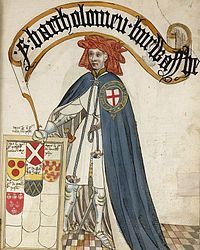
♕ Admiral of the Fleet Sir John Paveley de Beauchamp, 1st Baron Beauchamp de Warwick
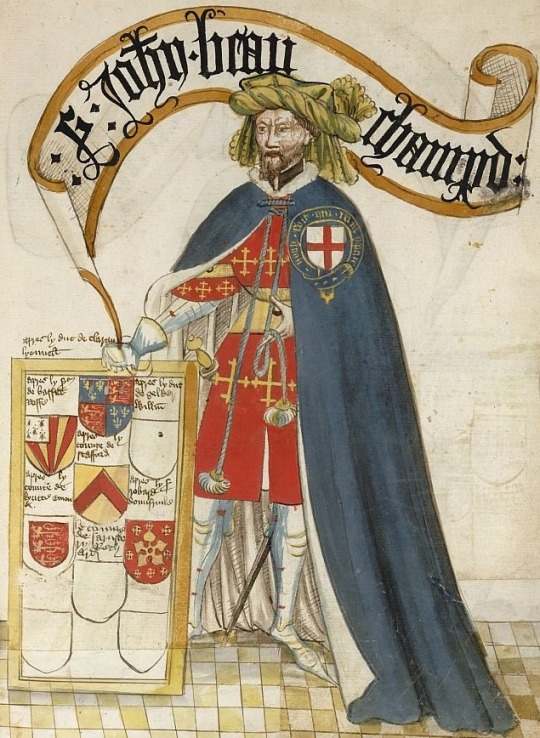
♕ John (V) de Mohun, 2nd Baron Mohun
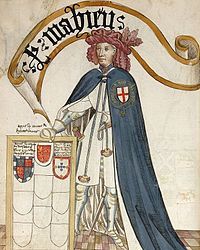
♕ Sir Hugh Courtenay
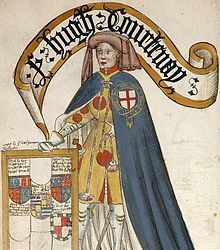
♕ Thomas Holland, 1st Earl of Kent
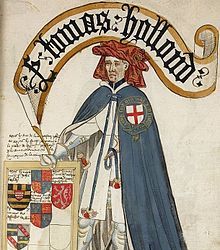
♕ John de Grey, 2nd Baron Grey de Rotherfield
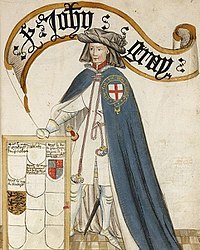
♕ Sir Richard Fitz-Simon
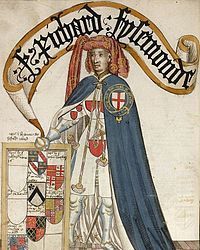
♕ Sir Miles Stapleton of Bedale
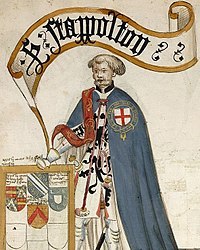
♕ Sir Thomas Wale
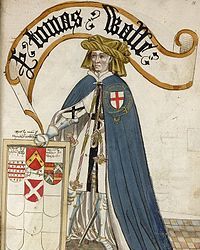
♕ Sir Hugh Wrottesley
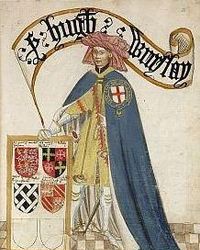
♕ Sir Neil Loring
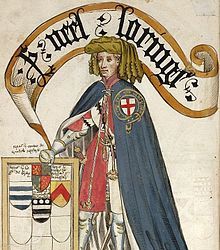
♕ Sir John Chandos, Viscount of Saint-Sauveur
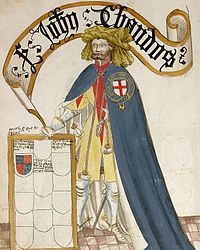
♕ Sir James Audley
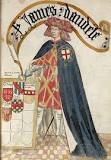
♕ Sir Otho Holand
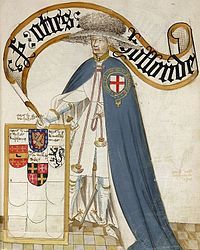
♕ Sir Henry Eam
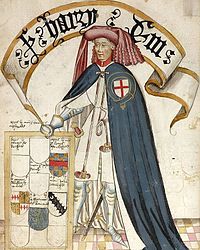
♕ Sir Sanchet D'Abrichecourt

♕ Sir Walter Paveley

~~~~~~~~~~~~~~~~~~~~~~~~~~~~~~~~~~~~~~~~~~~~~~~~~~~~~~~~~~~
𝒯𝓎𝓅𝑒𝓈 𝑜𝒻 𝑀𝑒𝓂𝒷𝑒𝓇𝓈
𝐿𝒶𝒹𝒾𝑒𝓈 𝒞𝑜𝓂𝓅𝒶𝓃𝒾𝑜𝓃 𝑜𝒻 𝓉𝒽𝑒 𝒢𝒶𝓇𝓉𝑒𝓇
(Each members photo will be under their names)
(King Henry VII of England)
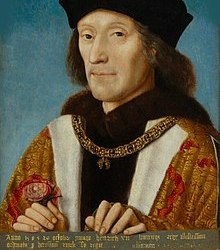
(Lady Margaret Beaufort)
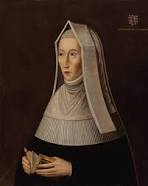
(Her Majesty Queen Alexandra)
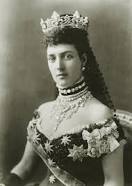
(His Majesty King Edward VII)
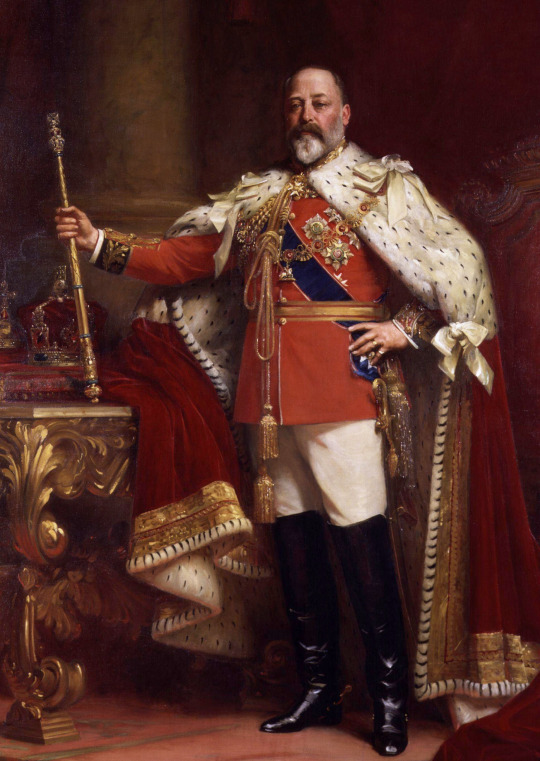
(His Majesty King George V)
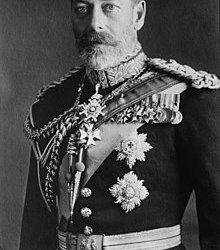
(Her Majesty Queen Mary)
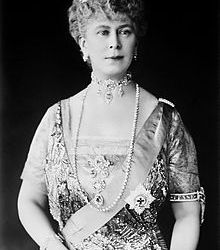
(His Majesty King George VI)
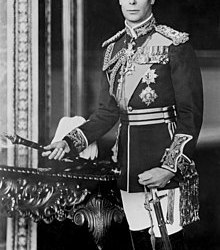
(Her Majesty Queen Elizabeth The Queen Mother)
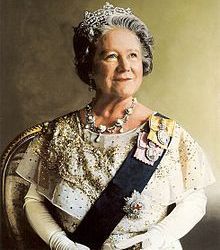
After The Most Noble Order of the Garter was founded, like men, women were appointed Ladies of the Garter but were not companions. Ladies of the Garter included: Lady Margaret Beaufort (Mother to King Henry VII of England), Her Majesty Queen Alexandra (Wife of His Majesty King Edward VII: She was named Lady of the Garter by her husband), Her Majesty Queen Mary (Wife to His Majesty King George V: She was named Lady of the Garter by her husband), & Her Majesty Queen Elizabeth The Queen Mother (Wife to His Majesty King George VI: She was named Lady of the Garter by her husband). This practice though, was put to a stop by King Henry VII of England in 1488. Although beginning in the 20th century, women began to be re-associated with the The Most Noble Order of the Garter, but were again not made companions. In 1987, under the statue of Her Majesty Queen Elizabeth II, it became possible to install “Ladies Companion of the Garter.”
𝒪𝒻𝒻𝒾𝒸𝑒𝓇𝓈
(Each members photo will be under their names)
(Timothy John Dakin)

(James Hamilton, The 5th Duke of Abercorn)
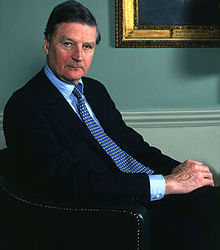
(Thomas Woodcock)

(Sarah Clarke)

(The Right Reverend Bishop David Conner, The Dean of Windsor)
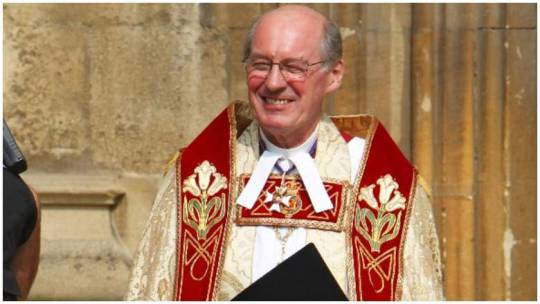
(Patric Laurence Dickinson)
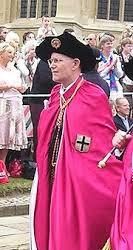
The Most Noble Order of the Garter has 6 different types of Officers:
1. The Prelate: This position will always belong to The Bishop of Winchester. Currently - Timothy John Dakin (Since 2012).
2. The Chancellor: Responsible for the Seal & Its Use: Currently - James Hamilton The 5th Duke of Abercorn (Since 2012)
3. The Register: Currently - The Right Reverend Bishop David Conner, The Dean of Windsor
4. The Garter Principal King of Arms: The Officer has jurisdiction over England, Wales, & Northern Ireland (With exception of Canada). Responds to the Earl Marshal for the running of the College & is the Principal Advisor to the Sovereign of the United Kingdom. This officer announces the New Monarch, after the current monarch has died. Currently - Thomas Woodcock (Since April 2010).
5. The Gentleman/Lady Usher of the Black Rod: Responsible for controlling access to and maintaining order within the House of Lords & its precincts, as well as for ceremonial events within those precincts. The officer is also the Usher & Doorkeeper at Order of the Garter Meetings & the personal attendant of the Sovereign. This officer has many other positions & duties as well. Currently - Sarah Clarke (Since February 13th, 2018)
6. The Secretary: Currently - Patric Laurence Dickinson (Since September 1st, 2010)
𝒮𝓊𝓅𝑒𝓇𝓃𝓊𝓂𝑒𝓇𝒶𝓇𝓎 𝑀𝑒𝓂𝒷𝑒𝓇𝓈
(Each members photo will be under their names)
Along with the Founder, Ladies Companion of the Garter, & The Original Members of the The Most Noble Order of the Garter, there is another group of members who receive this honor. These members are called Supernumerary Members & they are the members who do not count towards the limit of the 24 Living Family Members/Companions but are in association of the Order. These members can also be referred to Royal Knights & Ladies of the Garter.
(His Majesty King George I of Great Britain)
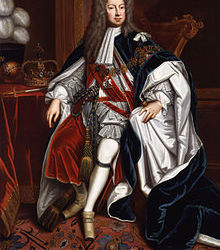
(His Majesty King George II of Great Britain)
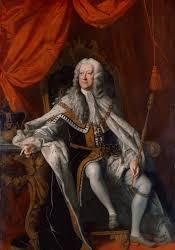
(His Majesty King George III of The United Kingdom)
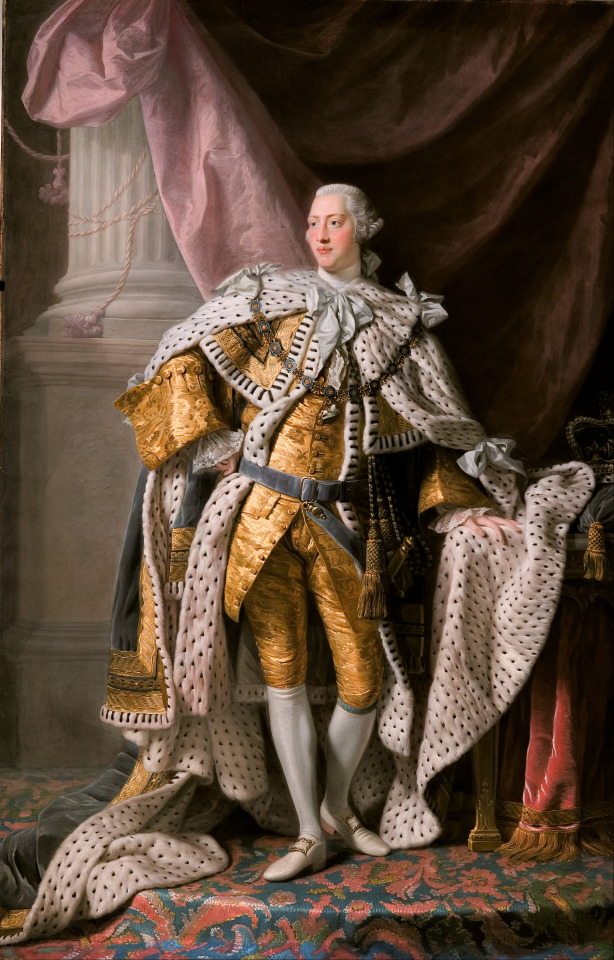
(His Imperial Majesty Emperor Alexander I of Russia)

These titles were created by His Majesty King George III of The United Kingdom in 1786 but didn’t create the statute of Supernumerary Members until 1805. He created the title of Supernumerary Members, so that his sons didn’t count toward the 24 companion limit. King George created the statute of members, so that any descendant of His Majesty King George II of Great Britain, could not be installed in The Most Noble Order of the Garter as such a member. 8 years later in 1813, during the reign of His Imperial Majesty Emperor Alexander I of Russia, a membership of being a supernumerary member was extended to foreign monarchs. These members were known as Stranger Knights & Ladies of the Garter. The Statute of Supernumerary Members was put back into play in 1831 & extended to all descendants of His Majesty King George I of Great Britain. In 1954, each installation into The Most Noble Order of the Garter, required an enactment of the statute. The statute authorizes the regular admission of Stranger Knights & Ladies of the Garter without further special enactments.
~~~~~~~~~~~~~~~~~~~~~~~~~~~~~~~~~~~~~~~~~~~~~~~~~~~~~~~~~~~
𝒞𝓊𝓇𝓇𝑒𝓃𝓉 𝑀𝑒𝓂𝒷𝑒𝓇𝓈 𝑜𝒻 𝓉𝒽𝑒 𝐻𝑜𝓃𝑜𝓇
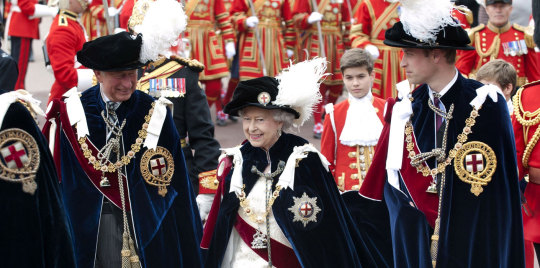
*Fact: The Most Noble Order of the Garter is only allowed to The Sovereign/Monarch, The Heir to the Throne, 24 Living Family Members/Companions, & Various Supernumerary (not belonging to a regular staff but engaged for work) Members. The Monarch alone can also grant membership.*
(Each Member will have their photo below their name)
♕ Her Majesty The Queen: Sovereign of The Most Noble Order of the Garter
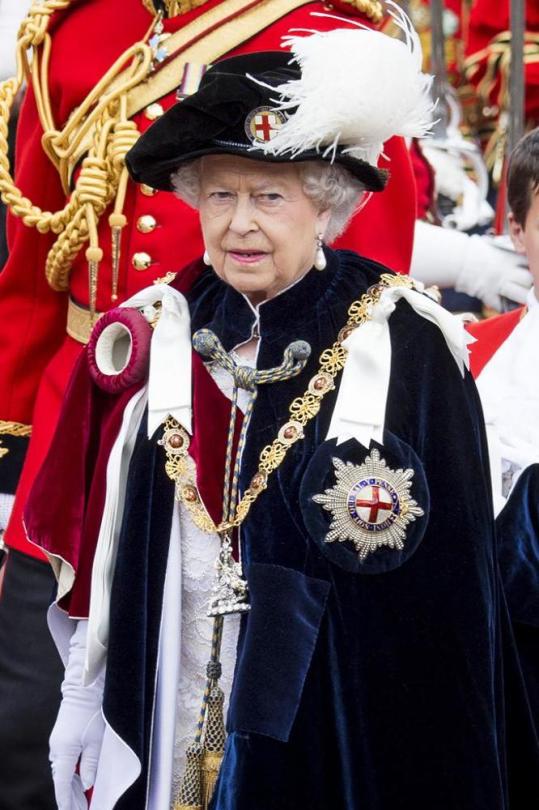
♕ His Royal Highness Prince Philip
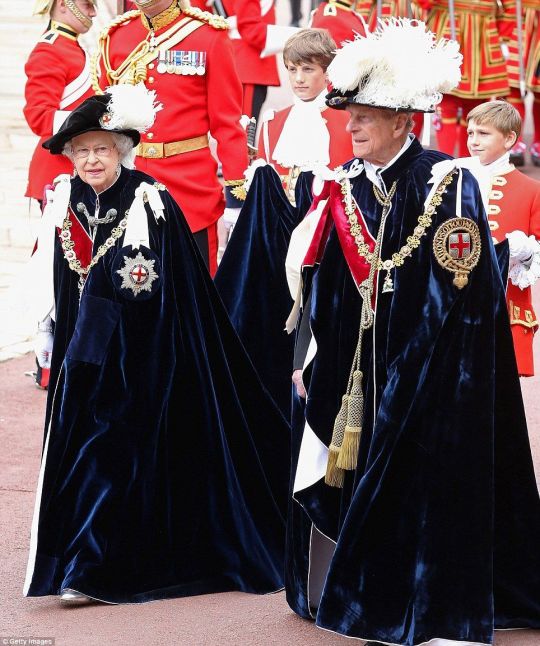
♕ His Royal Highness Prince Charles: Royal Knight Companion of The Most Noble Order of the Garter
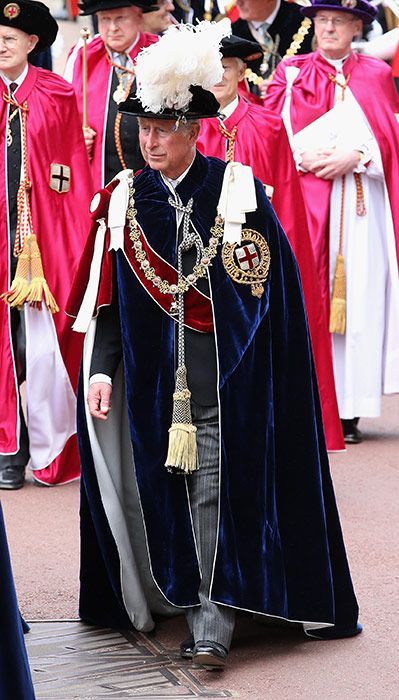
♕ His Royal Highness Prince William
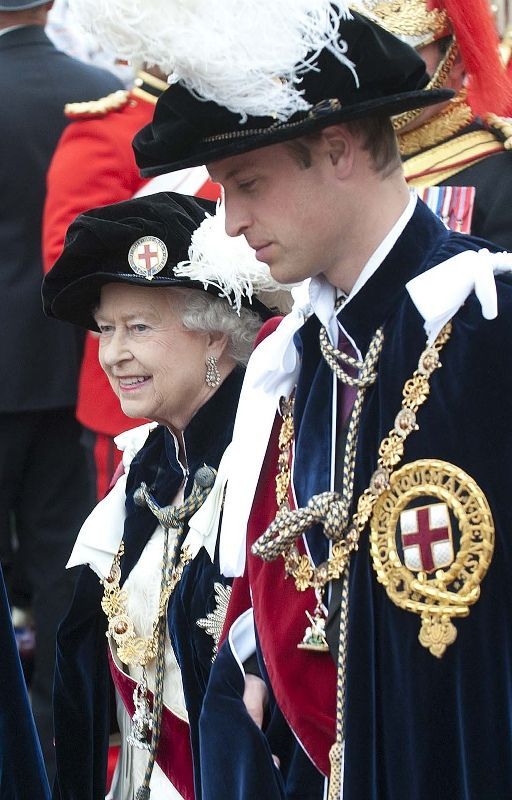
♕ His Royal Highness Prince Andrew
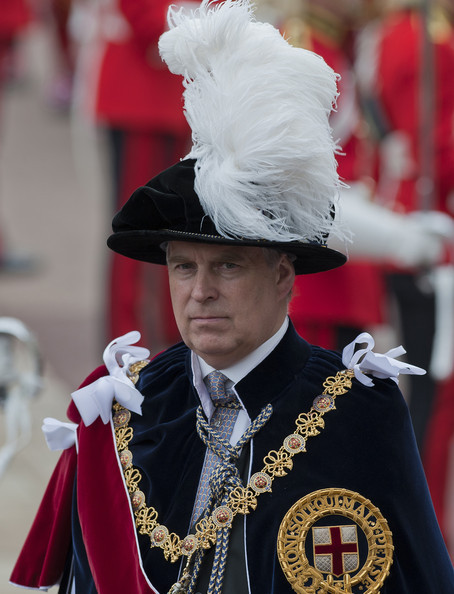
♕ His Royal Highness Prince Edward

♕ Her Royal Highness Anne The Princess Royal
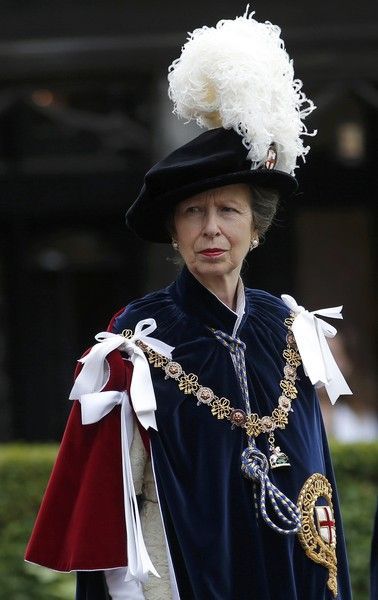
~~~~~~~~~~~~~~~~~~~~~~~~~~~~~~~~~~~~~~~~~~~~~~~~~~~~~~~~~~~
𝒟𝑒𝑔𝓇𝒶𝒹𝒶𝓉𝒾𝑜𝓃 𝑜𝒻 𝒶 𝑀𝑒𝓂𝒷𝑒𝓇
The Degradation of a Member of the The Most Noble Order of the Garter is a big issue, but can be done by the current Sovereign. This began in the late 15th century.
𝒯𝒽𝑒 𝒟𝑒𝑔𝓇𝒶𝒹𝒶𝓉𝒾𝑜𝓃 𝒫𝓇𝑜𝒸𝑒𝓈𝓈
During the 15th century, The Degradation of a Member of the The Most Noble Order of the Garter was a formal ceremony. The Garter King of Arms is accompanied by the rest of the members at St. George’s Chapel. The Garter of Arms reads aloud the reason for degradation as a member climbs up a ladder to remove the former knights banner, crest, helm, & sword into the choir. The other members then lead the degraded knight down the length of the chapel, out the doors, & into the castle ditch.
𝐿𝒾𝓈𝓉 𝑜𝒻 𝒟𝑒𝑔𝓇𝒶𝒹𝑒𝒹 𝑀𝑒𝓂𝒷𝑒𝓇𝓈
During World War 1, a total of 8 knights were degraded from their positions: 2 Royal Knights & 6 Stranger Knights. These knights were rulers, monarchs, or princes of enemy nations in 1915.
(Each Member will have their photo below their name)
♕ 1915: His Highness The Duke of Saxe-Coburg and Gotha: Broke off relations with his family in the Belgian & British Courts to support the German Empire. He was stripped of his honor by His Majesty King George V.
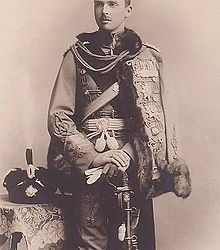
♕ 1915: Crown Prince Ernest Augustus of Hanover, 3rd Duke of Cumberland and Teviotdale: World War 1 created conflict between the British Royal Family & the Hanoverian Cousins. He was stripped of his honor by His Majesty King George V.
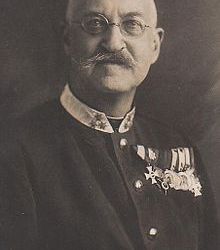
♕ 1915: His Imperial and Royal Apostolic Majesty Franz Joseph I The Emperor of Austria & Apostolic King of Hungary: Besides being stripped of his position in The Most Noble Order of the Garter, he was also stripped of his Royal Victorian Chain Award.
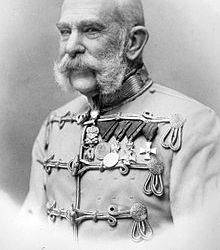
♕ 1915: His Royal Highness Prince Henry of Prussia: Besides being stripped from his position in The Most Noble Order of the Garter, he was also stripped of his position from The Most Honourable Order of the Bath & stripped of his Royal Victorian Chain Award.
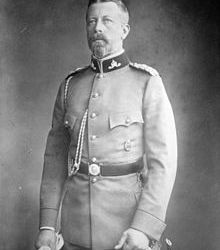
♕ 1915: His Imperial and Royal Highness Wilhelm The German Crown Prince & Crown Prince of Prussia: Besides being stripped from his position in The Most Noble Order of the Garter, he was also stripped of his position from The Most Honourable Order of the Bath & stripped of his Royal Victorian Chain Award.

♕ 1915: His Imperial and Royal Majesty Wilhelm II The German Emperor & King of Prussia: His Imperial & Royal Majesty is the most stripped Knight on this list. In 1915, he was not only stripped from his position in The Most Noble Order of the Garter, he was also stripped of his position from The Order of Saint John, The Honorary Grand Cross, Royal Victorian Order, & his Royal Victorian Chain Award.
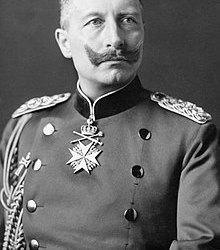
♕ 1941: His Majesty King Victor Emmanuel III of Italy: King Victor was stripped of his British Honors, after Italy entered World War 1 against the United Kingdom. His Majesty was not only stripped from his position in The Most Noble Order of the Garter, he was also stripped of his position from The Most Honorable Order of the Bath & his Royal Victorian Chain Award.
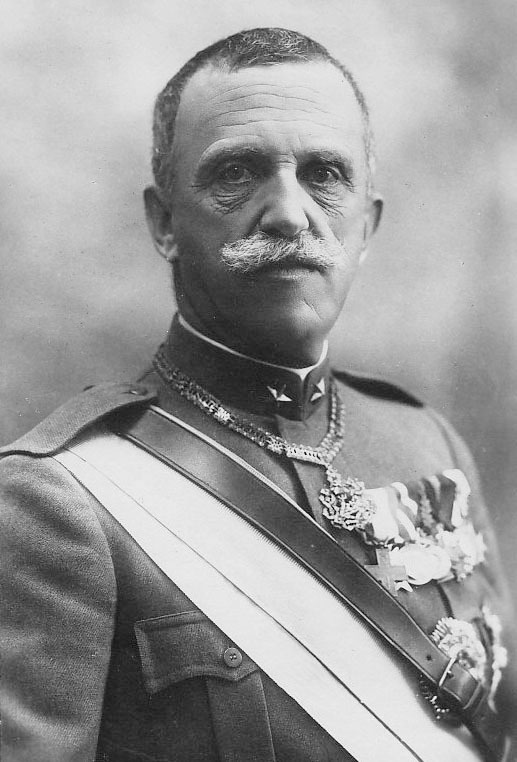
♕ 1941-1971: Emperor Hirohito of Japan: Emperor Hirohito was was stripped of his British Honors after Japan entered World War 2 against the United Kingdom. He was stripped of his position in The Most Noble Order of the Garter. In 1971, The Emperor was restored as a knight in The Most Noble Order of the Garter by Her Majesty Queen Elizabeth II. His British Honors include: Honorary General in the British Army, Field Marshal of Regular Army in the British Army, Honorary Knight Grand Cross of the Royal Victorian Order, Honorary Knight Grand Cross of The Most Honorable Order of the Bath, Knight of The Most Noble Order of the Garter, & Foreign Member of the Royal Society.
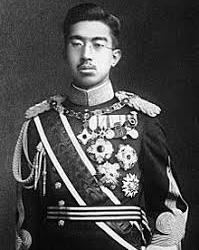
35 notes
·
View notes
Photo


草花螳螂牙彫根付Flowers and Grasses with a Praying-Mantis, Netsuke Japan, late 18th century
Met Museum New York
Provenance: Gift of Mrs. Russell Sage, 1910
H. 7/8 in. (2.2 cm); Diam. 2 1/8 in. (5.4 cm)
Netsuke (根付) [netsɯke] are miniature sculptures that were invented in 17th-century Japan to serve a practical function. The term is formed from the two Japanese characters ne+tsuke, meaning "root" and "to attach".
Traditional Japanese garments—robes called kosode and kimono—had no pockets; however, men who wore them needed a place to store their personal belongings, such as pipes, tobacco, money, seals, or medicines. Their solution was to place such objects in containers (called sagemono) hung by cords from the robes' sashes (obi). The containers may have been pouches or small woven baskets, but the most popular were beautifully crafted boxes (inrō), which were held shut by ojime, which were sliding beads on cords.
Whatever the form of the container, the fastener that secured the cord at the top of the sash was a carved, button-like toggle called a netsuke.
[text source: @wikipedia]
14 notes
·
View notes